Part 11 - Nagasaki, Japan

Part 11 - Nagasaki
Our last port of call in Japan was the second stop with a sad history after Hiroshima. On 9 August 1945, only three days after the devastating bombing in Hiroshima, Nagasaki met the same fate. At 11.02 am “Fat Man”, the second nuclear bomb, not only ended many lives but also changed world history.
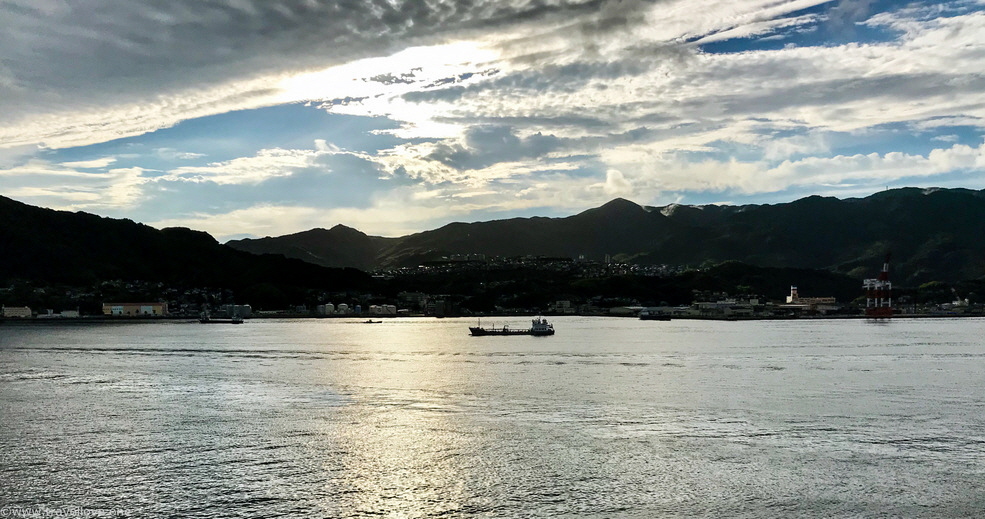
In order to get to the port of Nagasaki at the mouth of the Uragami River, we passed underneath Megamio Bridge around 8.00 am.
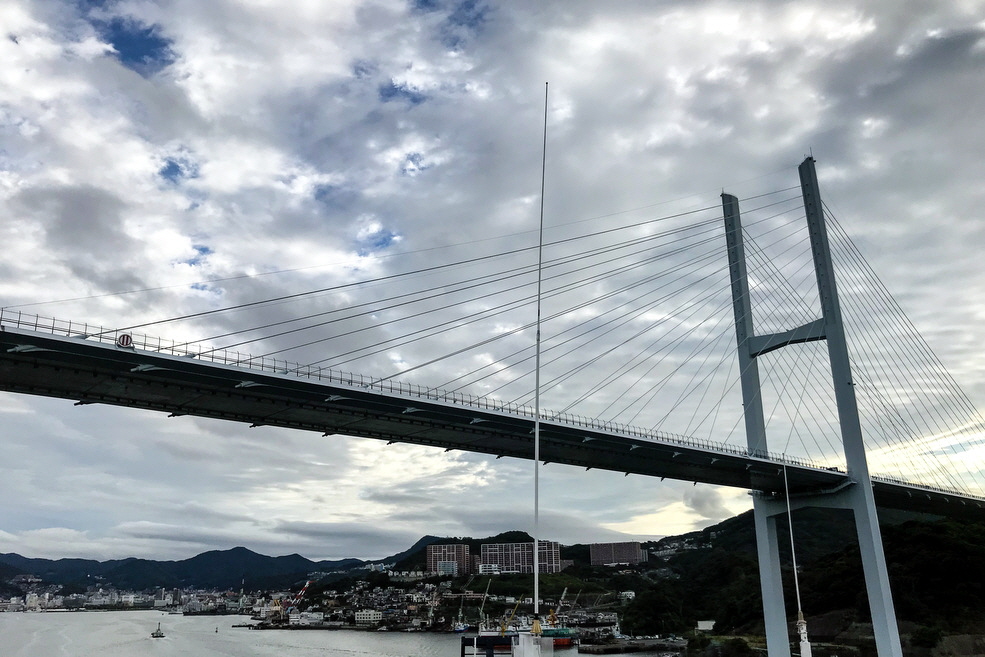
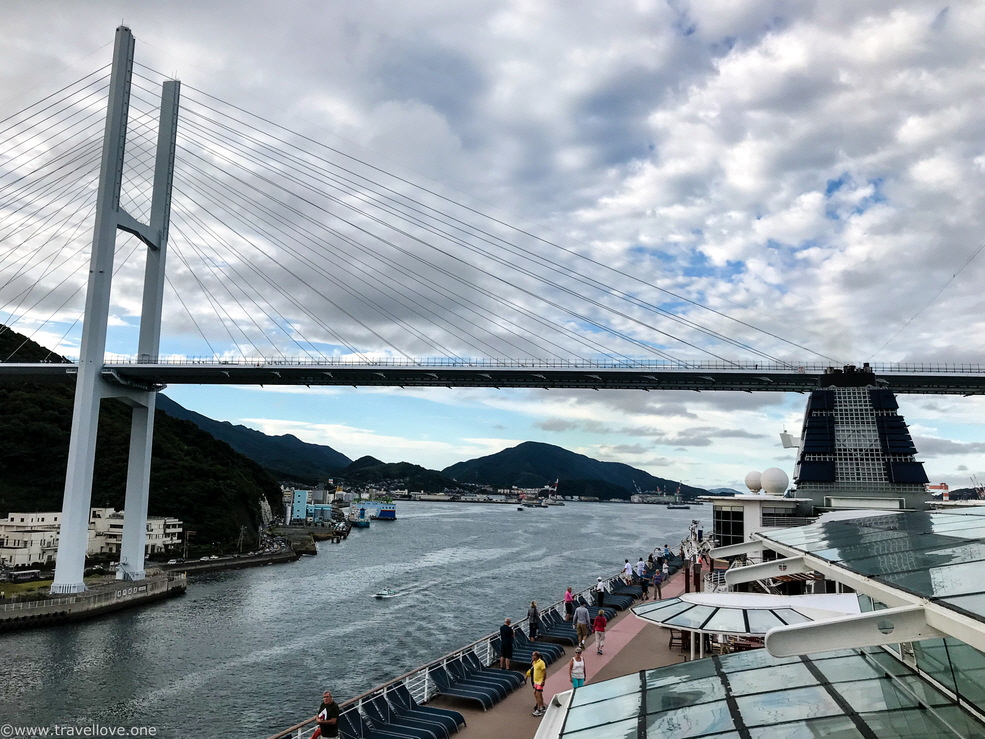
Only a few minutes later we docked at Nagasaki´s cruise terminal. It was very central, so we felt we were right in the city.
Nagasaki also had a memorial Peace Park that had been erected in memory of the bombing. Together with Judy and Frank we had decided to make this park our first destination in the morning.
Getting there was easy. Only 300 m (330 yds.) from the cruise terminal was the next tram stop. If you don’t want to change on the way to the Peace Park, you can walk about 1 km (0,6 miles) to the stop of another line (Dejma).
Although we knew from other excursions how easy it was to use the trams, we decided to take a taxi to the Peace Park. Taxis in Japan aren’t expensive and we were able to avoid the first run on the tram.
The area of the nuclear bombing is divided into three zones, symbolically called “Hope”, “Prayer” and “Learning”. The Peace Park is located in the “Zone of Hope” on a hill north of the center, which is where the taxi driver dropped us off.
The most prominent monument in the Peace Park is the impressive 10-meter high (30 ft.) statue of peace by artist Seibo Kitamura.
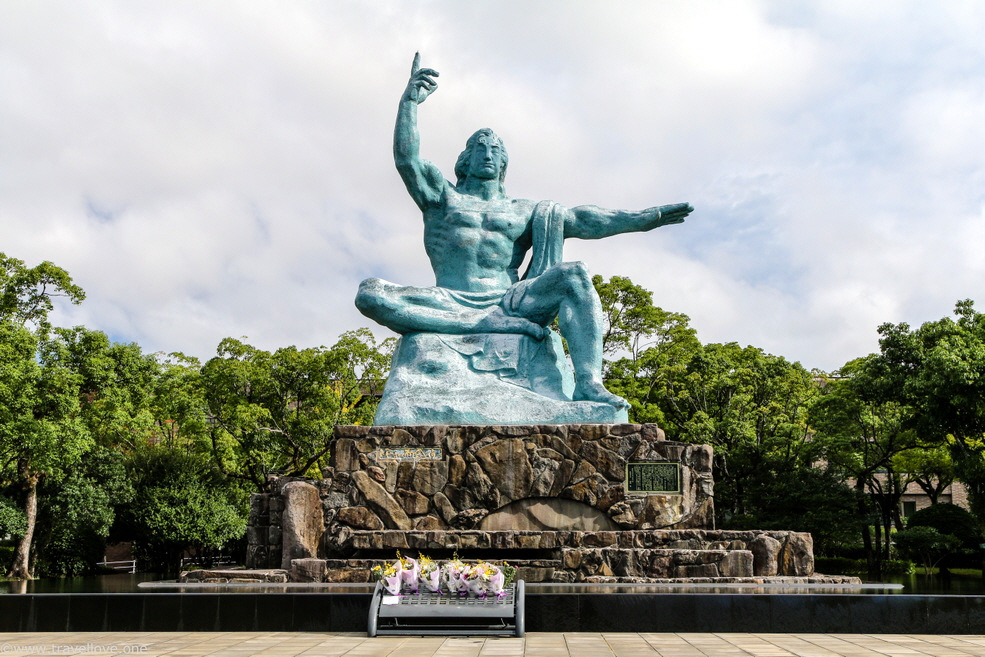
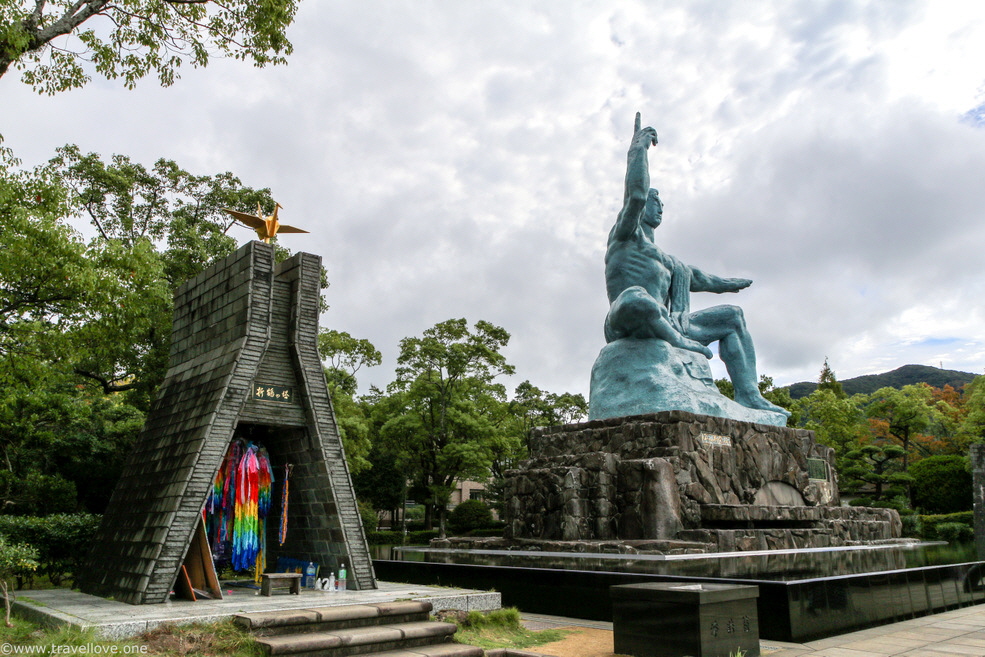
The right hand of the statue points at the threat of nuclear weapons, while the outstretched left hand symbolizes eternal peace. The mild face symbolizes divine grace, and the eyes are gently closed in prayer for the souls of the victims of the bombs. The bent right leg and the left leg on the floor respectively symbolize meditation and the will to stand up and save the people of the world. The statue represents a mixture of Western and Eastern art, religion and ideology. The face was deliberately not designed Japanese, but is meant to represent “a person who goes beyond human races”.
The names of the victims are kept in a chamber underneath the pedestal.
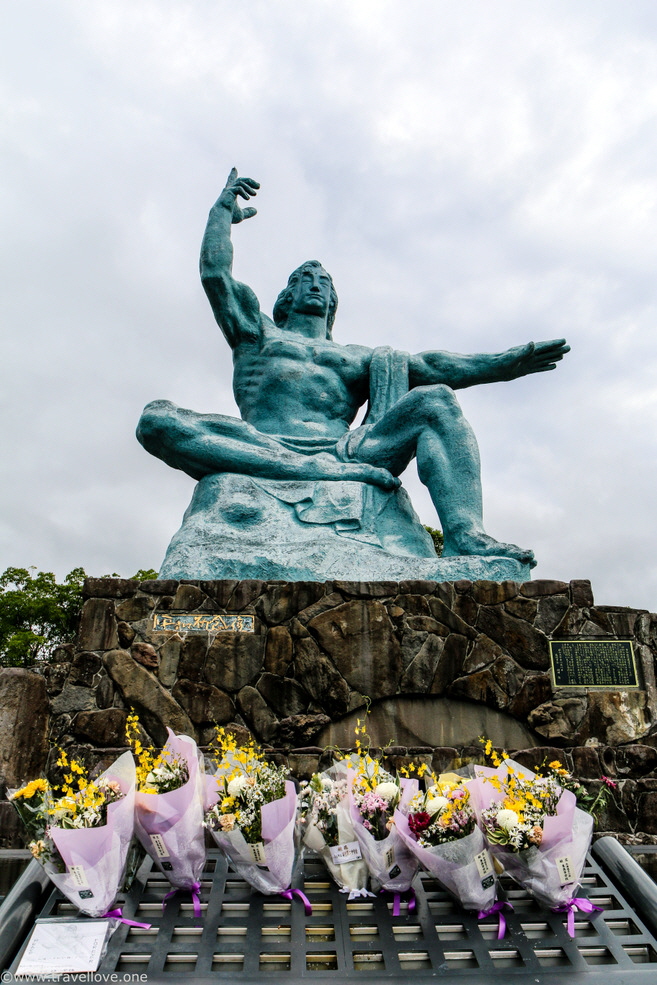
The pedestal holds a plaque with words of the artist:
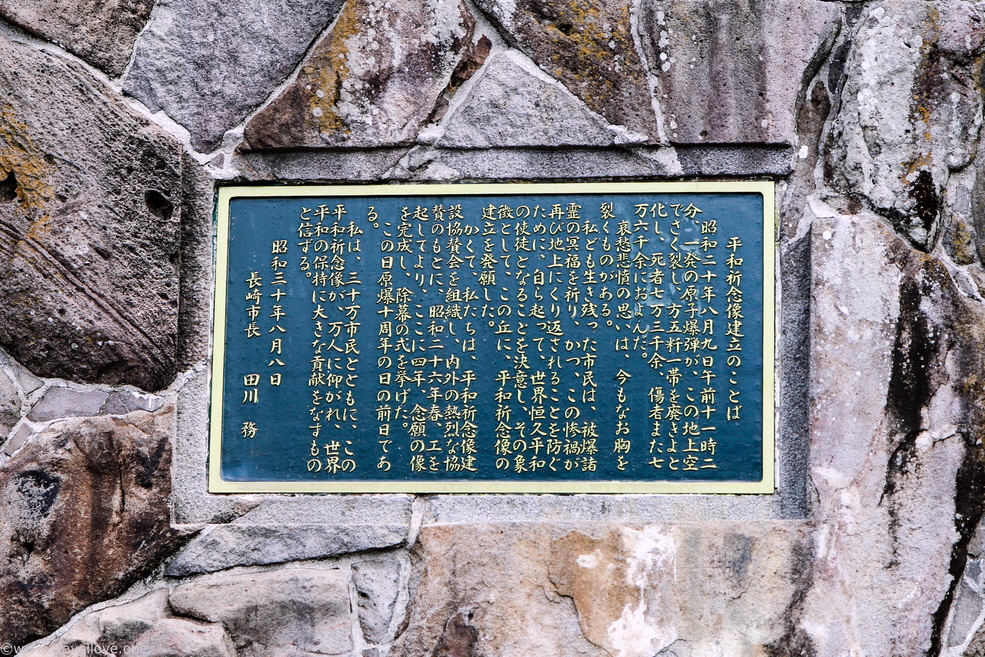
„After experiencing that nightmarish war, that blood-curdling carnage, that unendurable horror, Who could walk away without praying for peace? This statue was created as a signpost in the struggle for global harmony. Standing ten meters tall, it conveys the profundity of knowledge and the beauty of health and virility. The right hand points to the atomic bomb, the left hand points to peace, and the face prays deeply for the victims of war. Transcending the barriers of race and evoking the qualities of Buddha and God, it is a symbol of the greatest determination ever known in the history of Nagasaki and the highest hope of all mankind.”
Seibo Kitamura (Spring 1995)
The “Tower of Paper Cranes” is right next to the statue. Here, garlands of paper cranes are hung in memory of the victims.
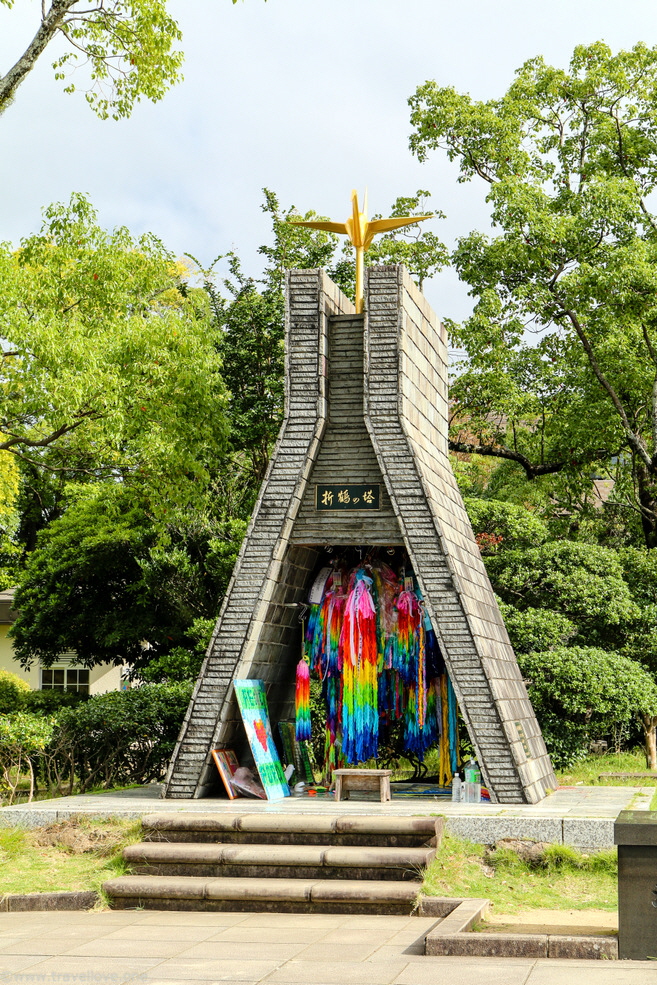
We were lucky to be there at the right time. A school class was about to start a ceremony during which they hung up paper cranes they had brought.
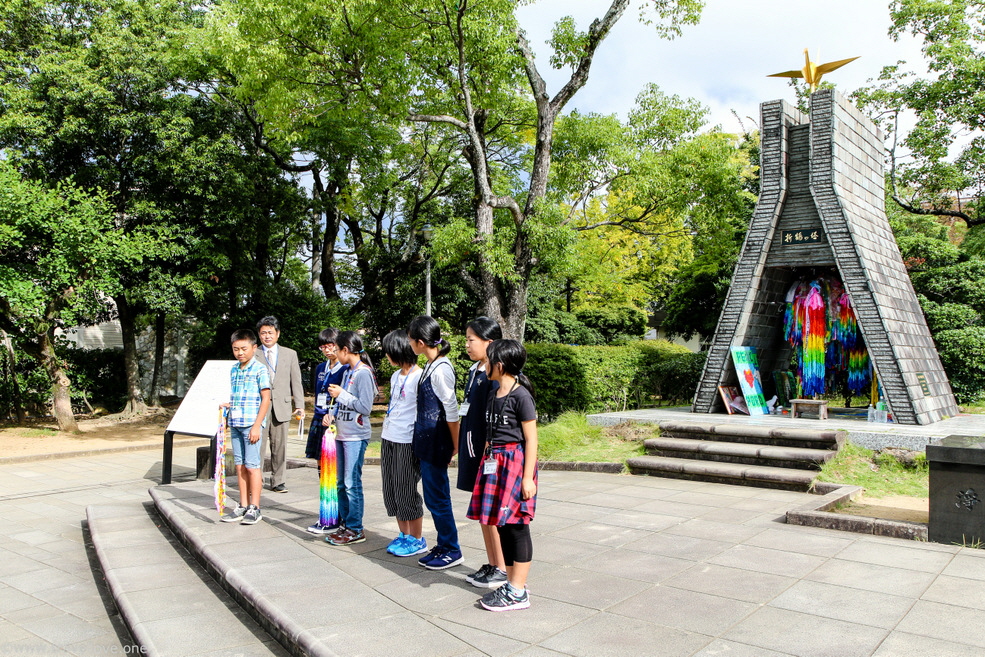
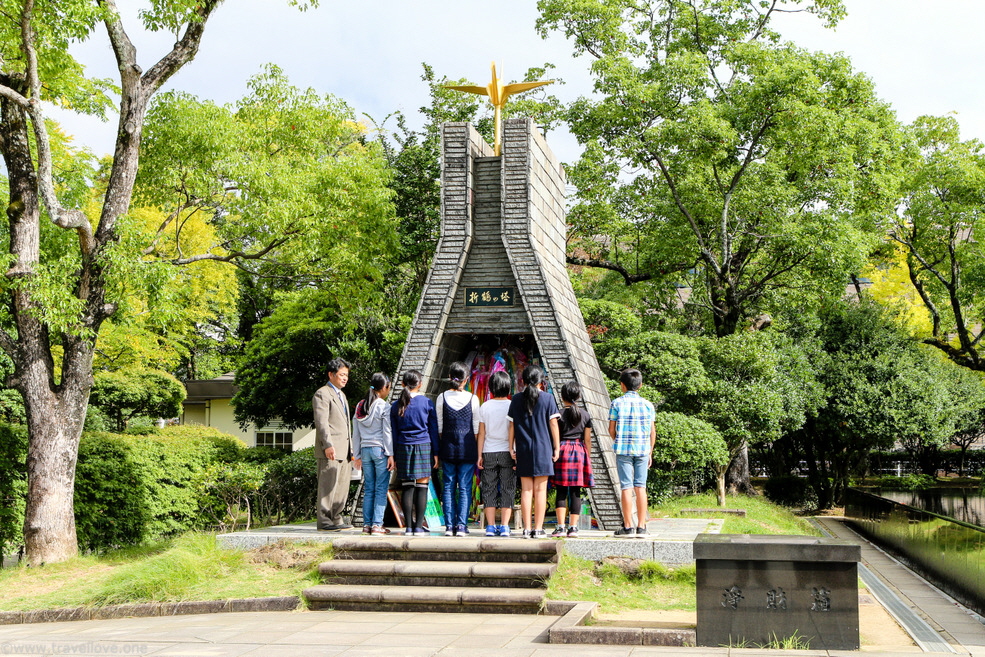
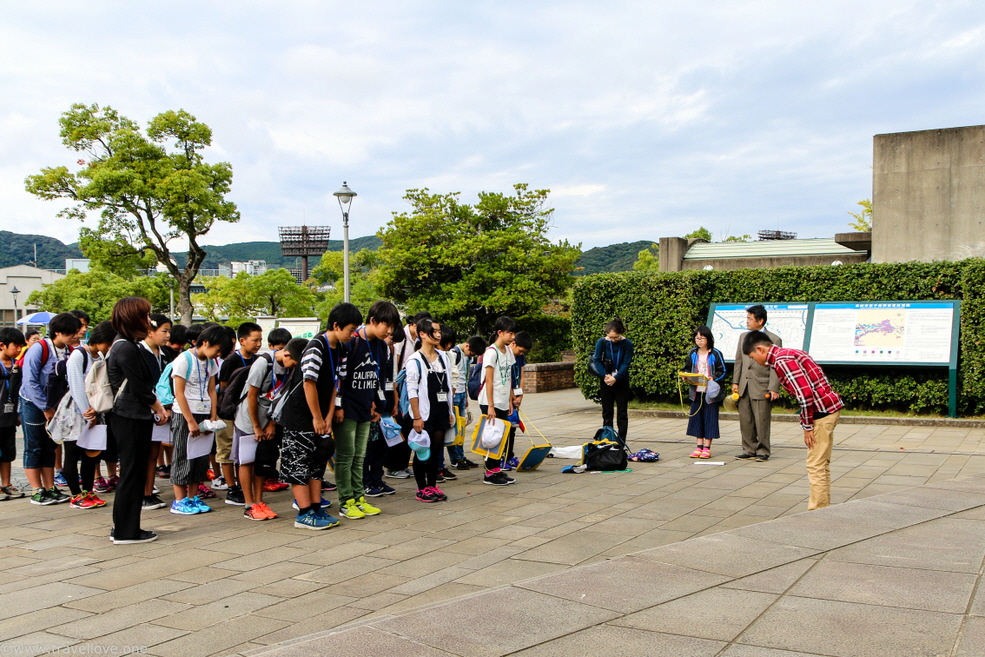
In front of the monument the children performed a song. When I asked one of the teachers what it was, he told me that it was a peace song. It might not come across in the video, but experiencing this at this spot was very moving. Many of the visitors who had arrived in the meantime had to reach for tissues.
In general, it was very nice to see so many children around in the Peace Park, apparently completing questionnaires for school.
It seems that the Japanese go to great effort coming to terms with the history of the war, in which Japan certainly has its share of responsibility.
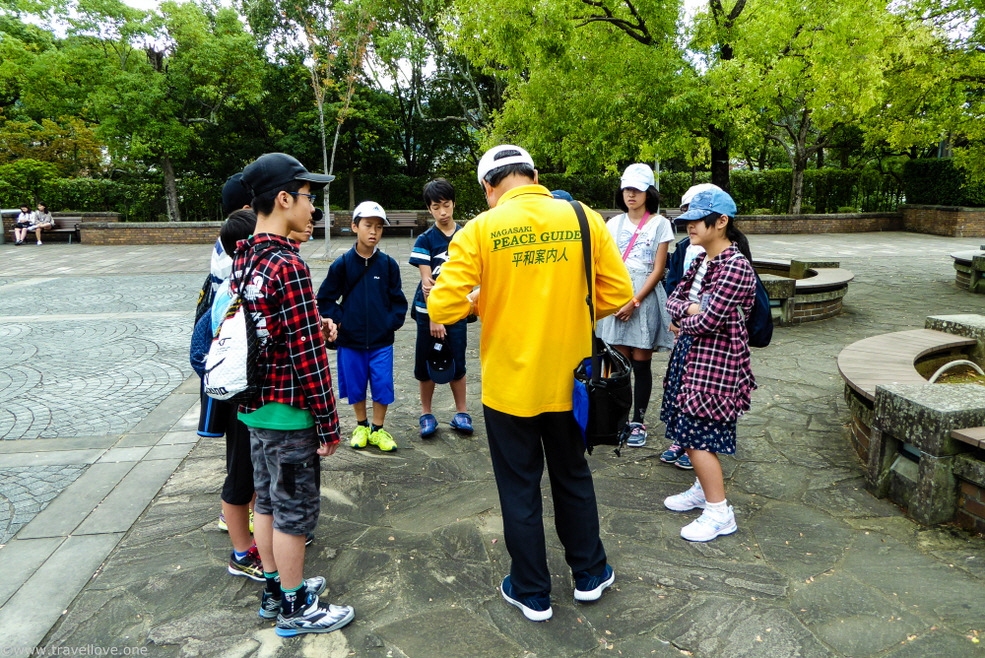
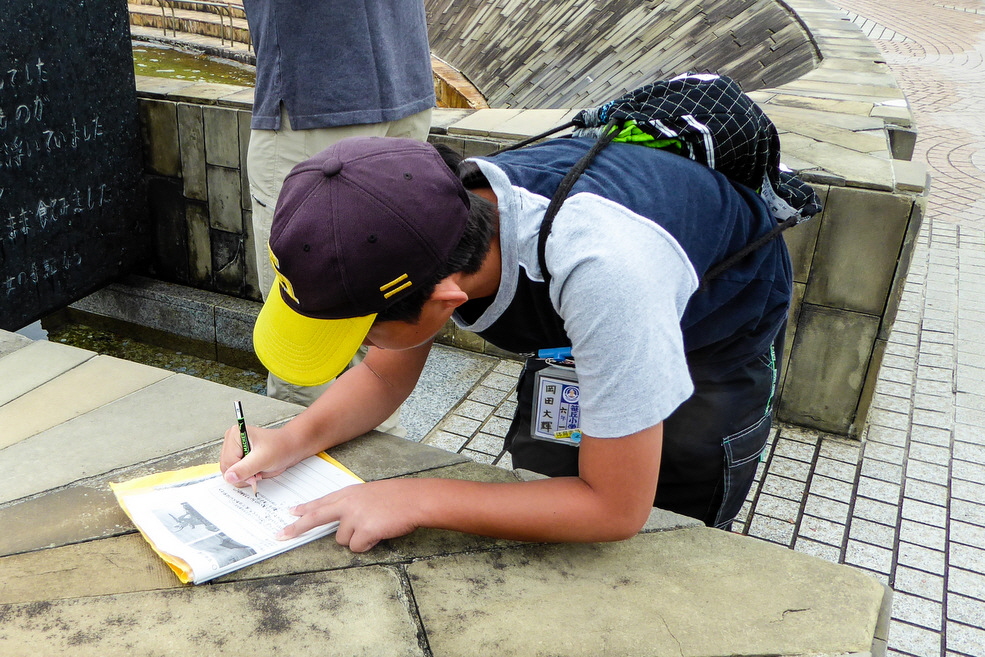
A straight path leads directly through the park towards the Peace Fountain at the other end. It first took us past the ruins of the Urakami prison, whose 134 inmates all died in the attack.
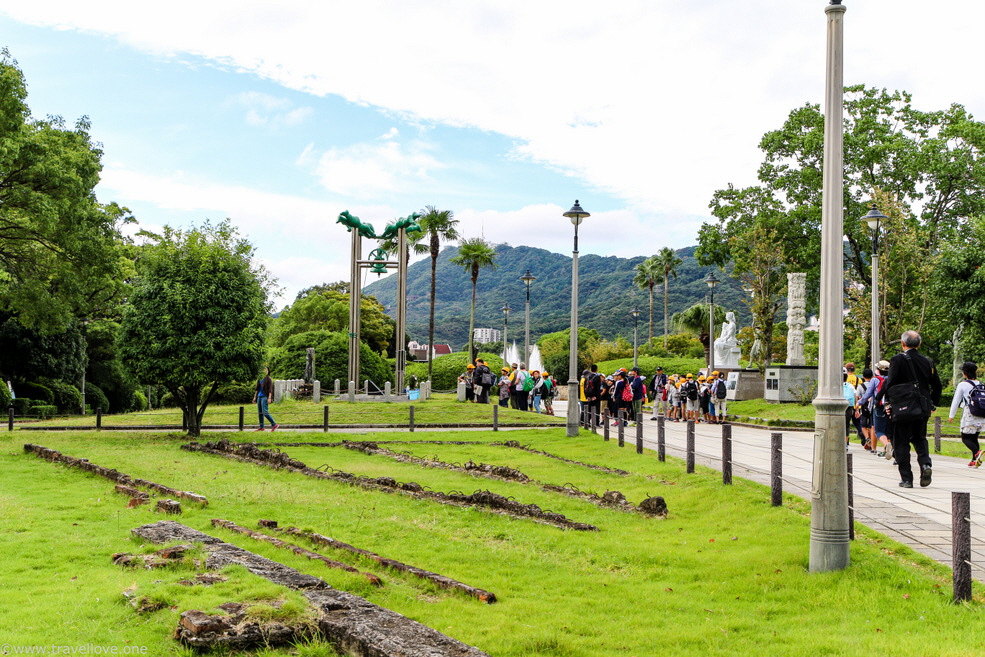
We then came past the bell tower named “Bell of Nagasaki”. The bell is dedicated to the many pupils and students who died in the ammunition and weapons factories.
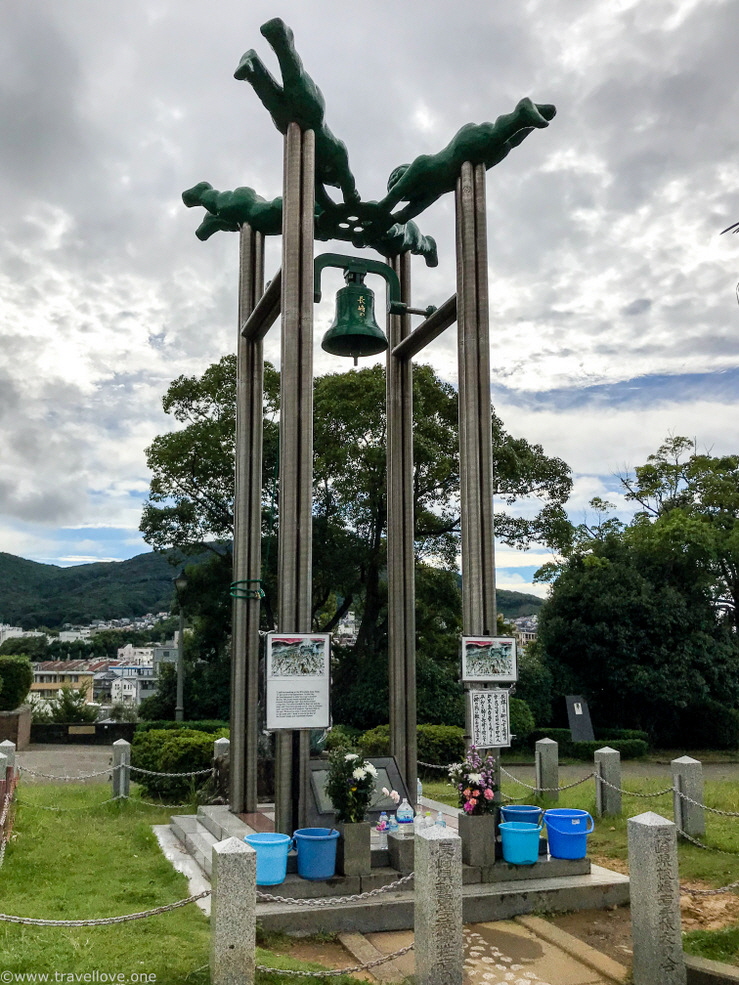
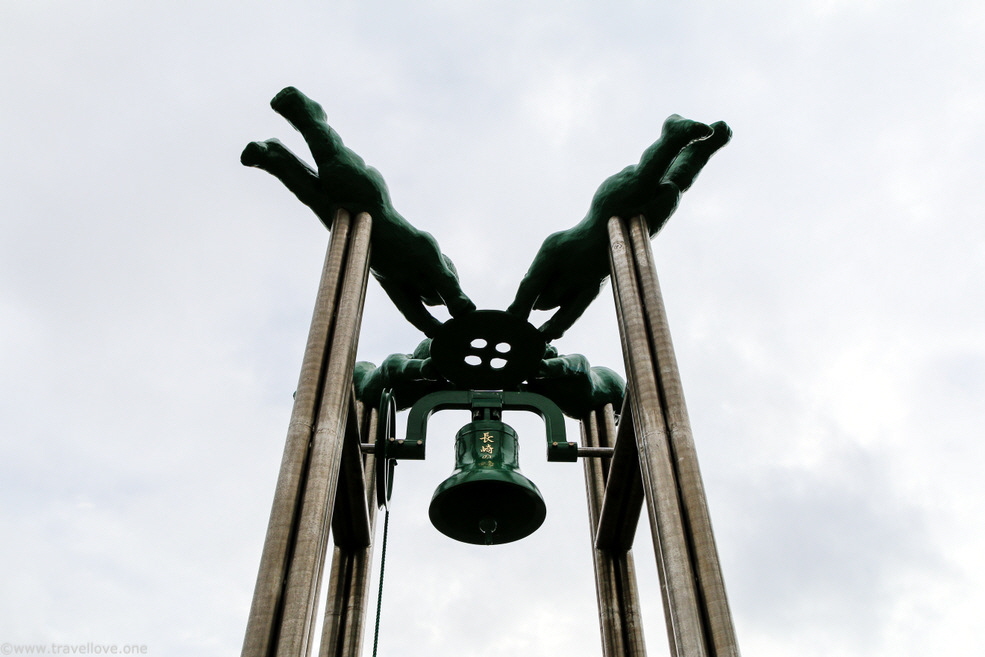
If you are lucky, this is where you’ll meet over 80-year-old Iinosuke Hayazaki, who tells his story as a member of the Nagasaki Peace Movement. Hayazaki-san was a 14-year-old mobilized student in one of the weapon factories, who miraculously survived the explosion protected by a pillar and experienced the horror that followed.
Unfortunately, we didn’t meet Hayazaki-san that day. Many reports on the internet tell of how, despite everything he has gone through, he tells his story without bitterness and full of kindness, sending out a reminder of peace.
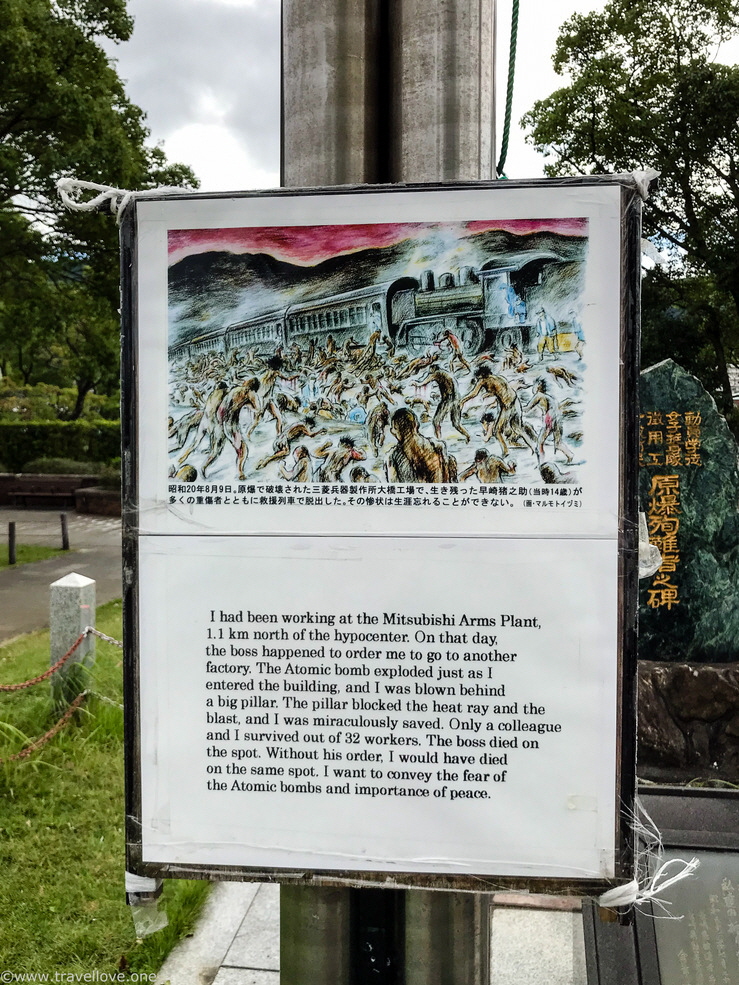
Behind the bell bower, the path was lined with statues and monuments donated by twin cities and other nations around the world. The works of art should not only symbolize international friendship, but also express the hope of a better future and a world free of nuclear weapons.
Come along with us past some of the monuments...
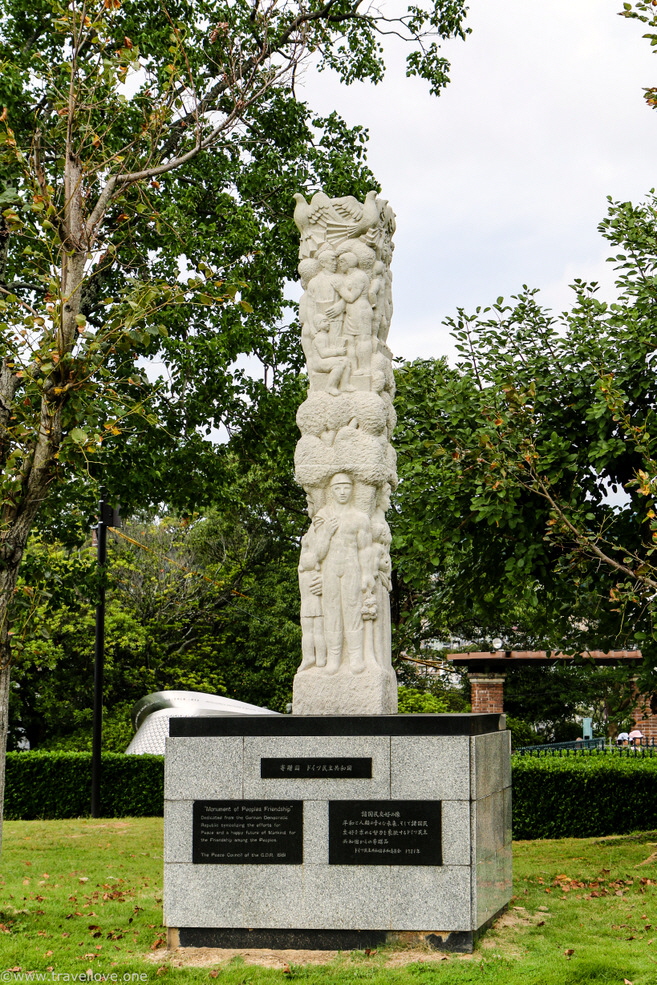
„Monument of Peoples Friendship“, GDR, 1981
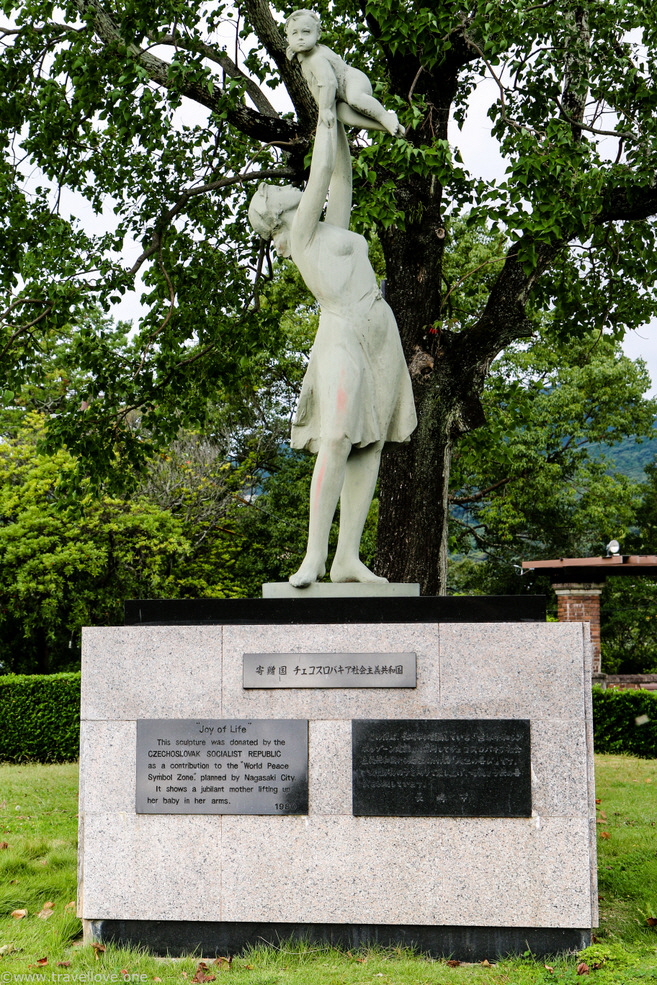
“Joy of Life”, Czechoslovakia, 1980
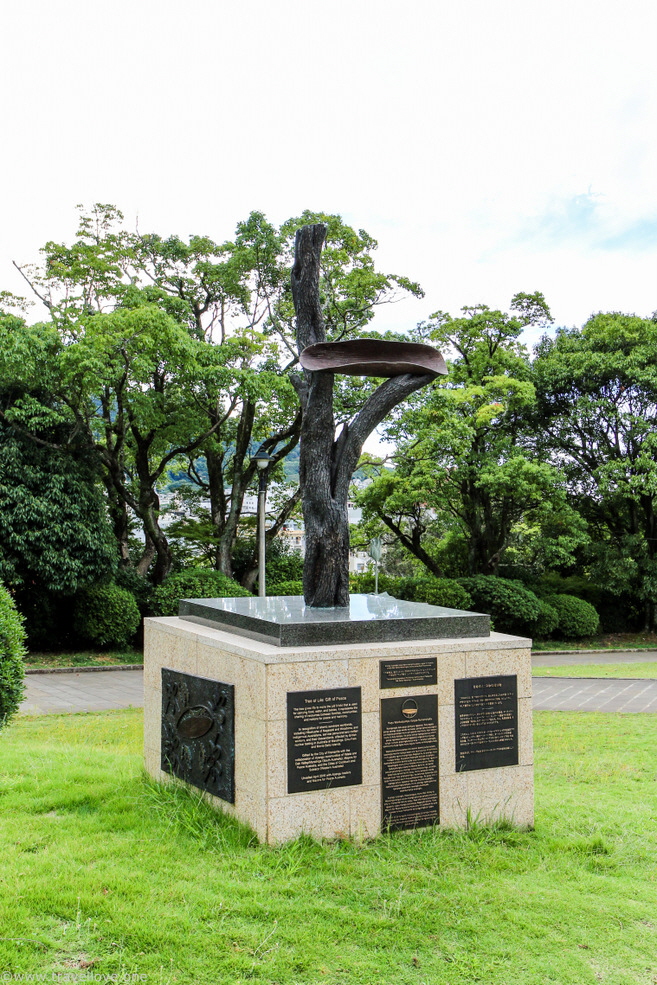
“Tree of Life: Gift of Peace”, Various Cities of Australia, 2016
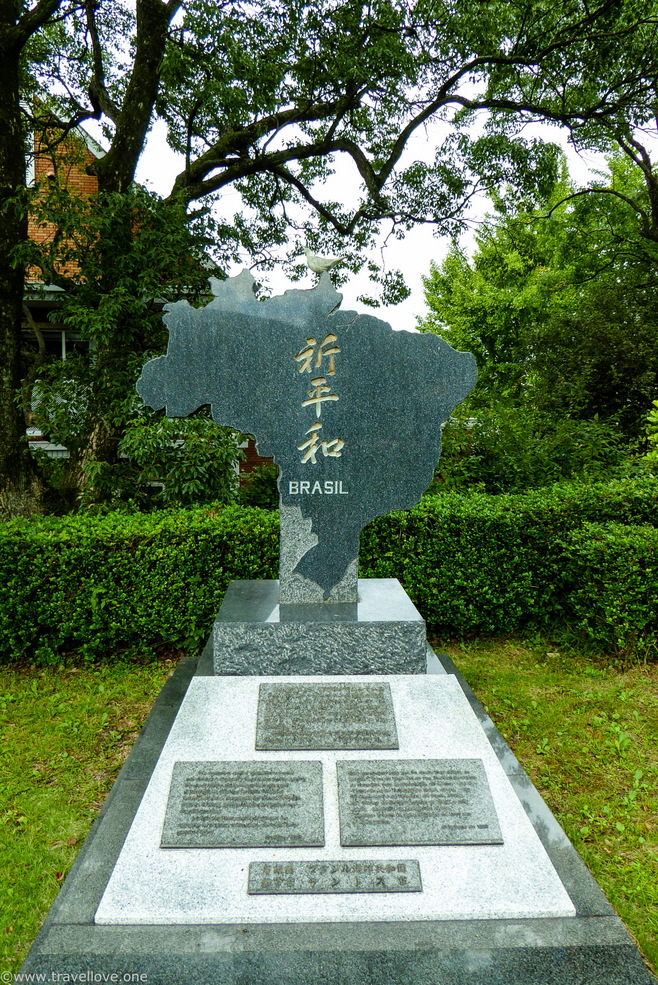
“Monument of Peace”, Brazil, 1988
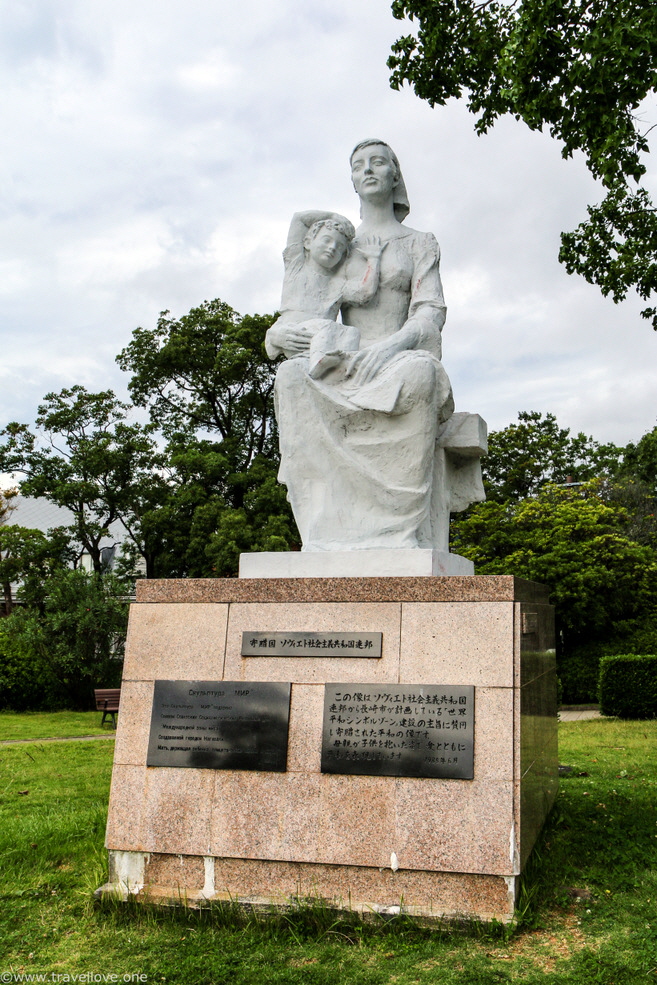
“Statue of Peace”, USSR, 1985
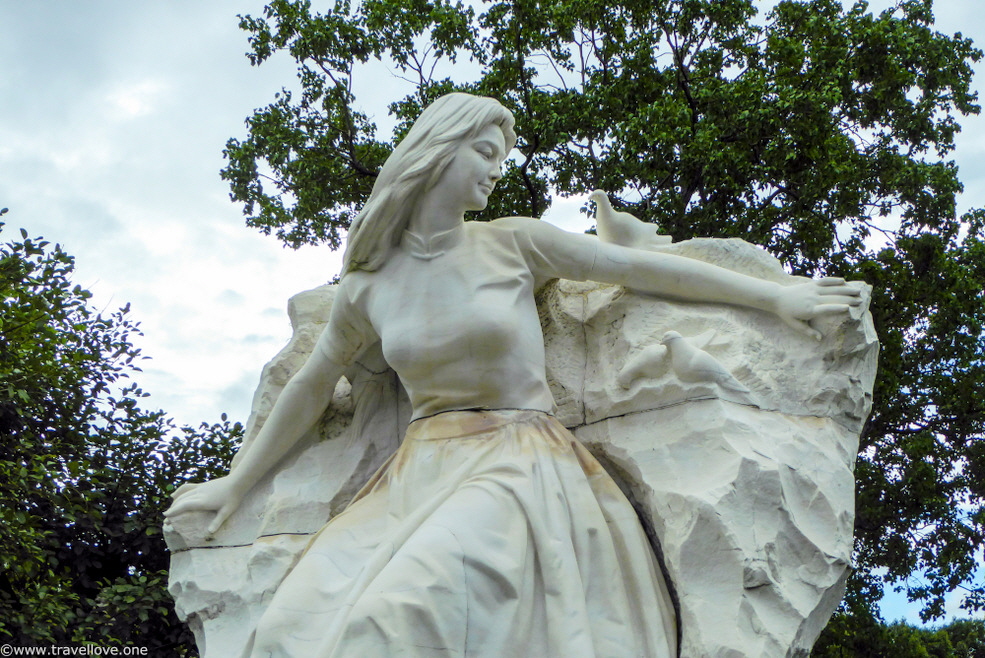
“Maiden of Peace”, China, 1985
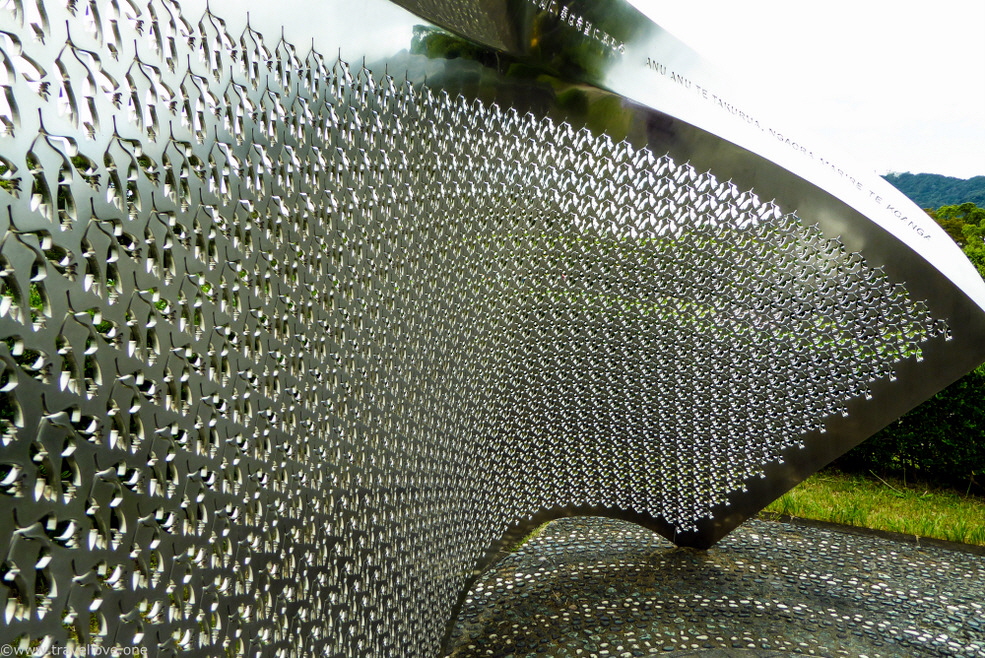
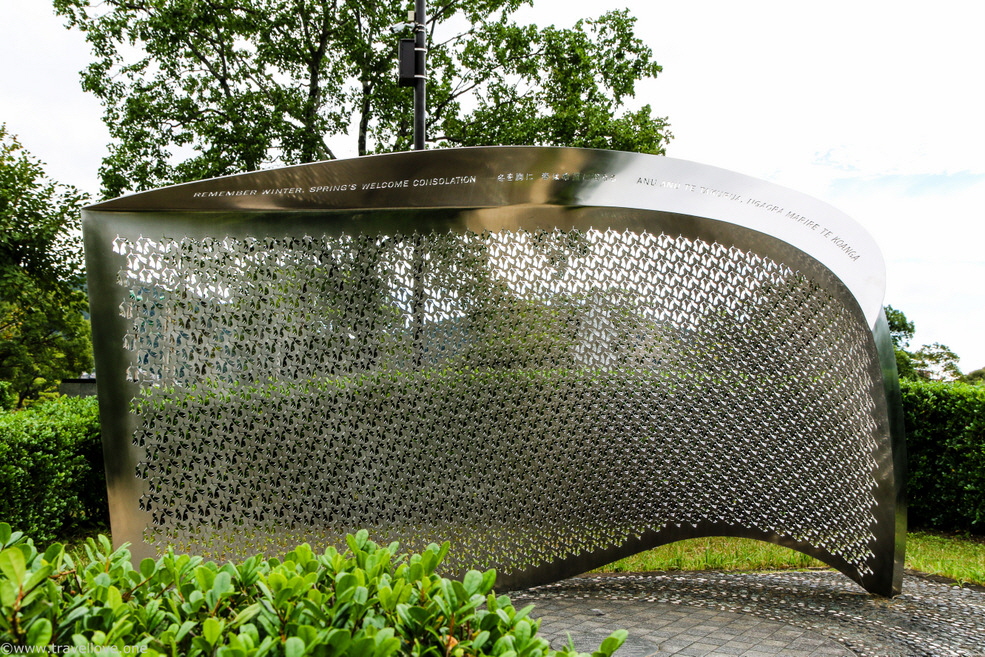
"Cloak of Peace (Te Korowai Rangimarie)", New Zealand, 2006
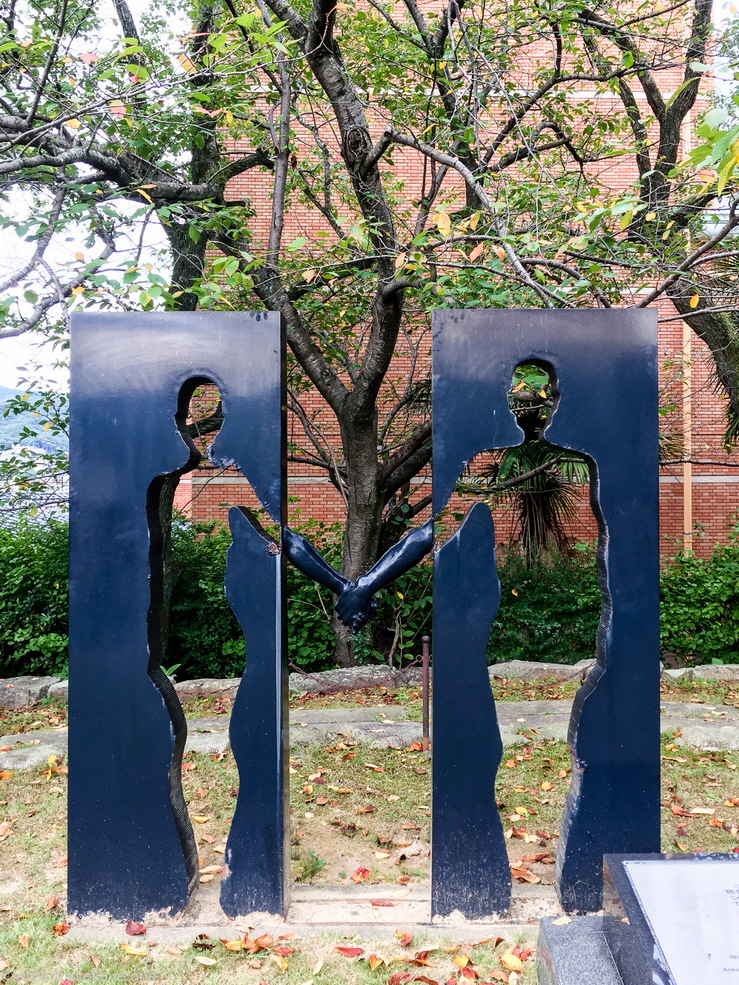
“Infinity”, Turkey, 1991
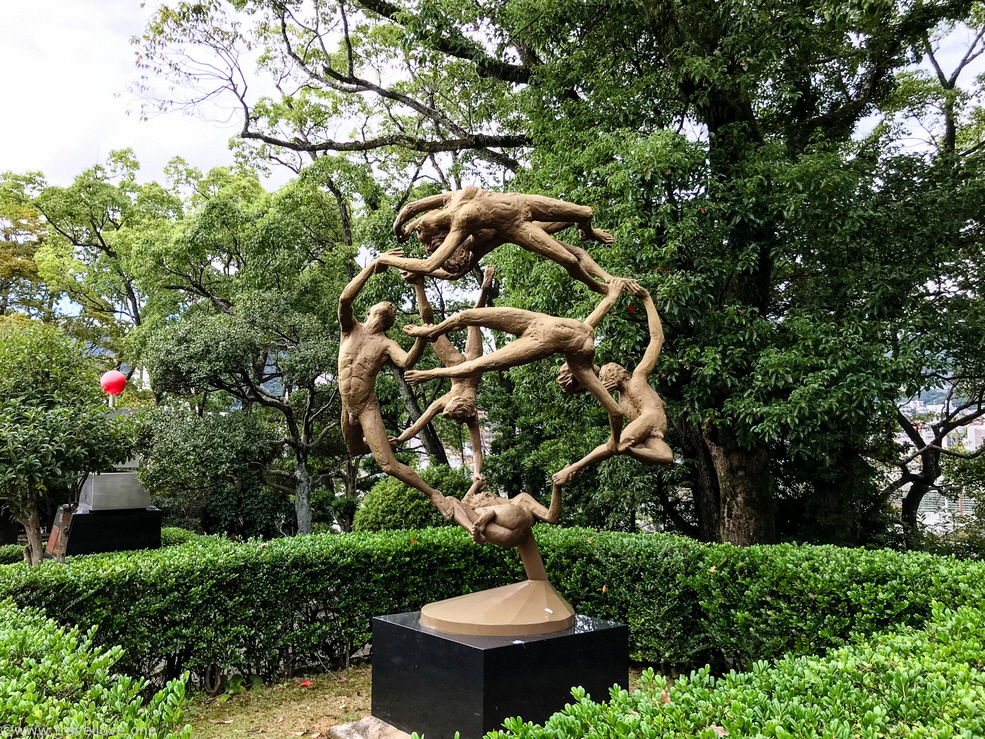
“Earth Constellation”, City of St. Paul, Minnesota, 1992
At the end of the park we reached the Fountain of Peace. The fountain was built in 1969 in memory of the victims suffering from thirst due to their terrible burns and radation. It commemorates a vicious circle – many people either died of thirst or by drinking contaminated water.
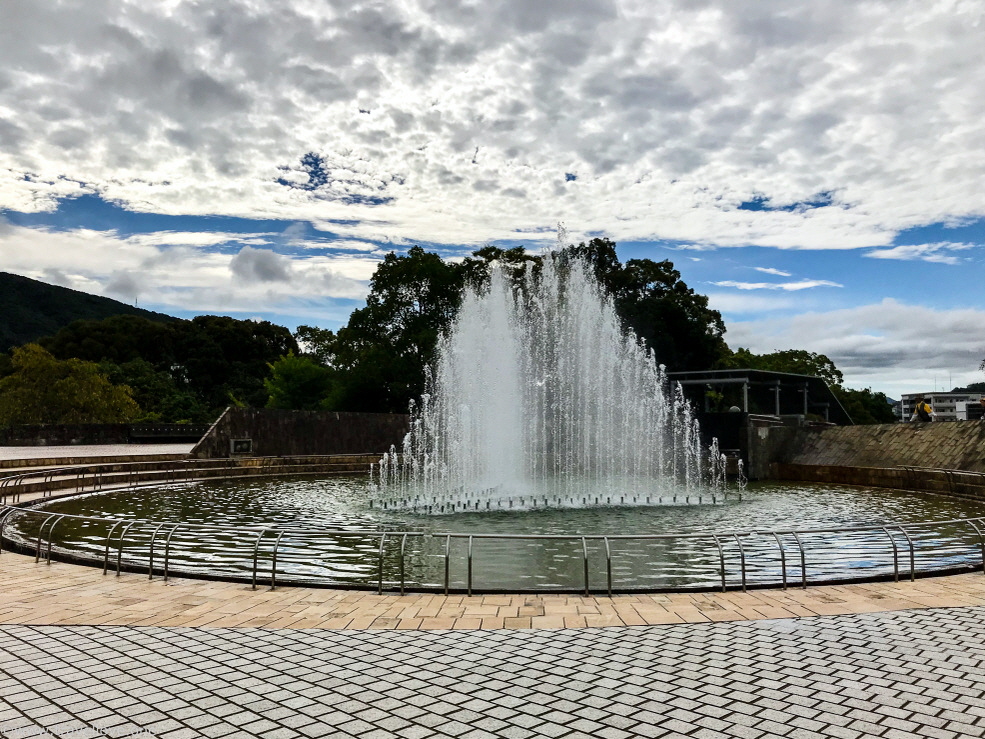
The sprays are shaped like the wings of a flying dove. Standing in front of the fountain, they form a kind of funnel, which directs the view to the warning statue at the other end of the “Zone of Hope”.
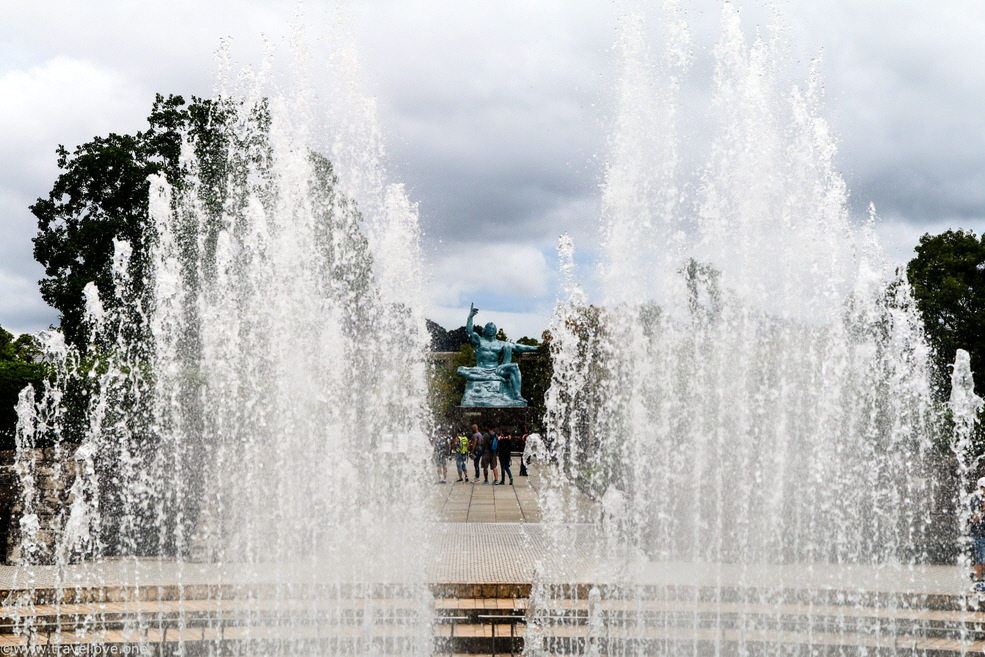
The random look at the school children running around between warning and hope seemed almost symbolic.
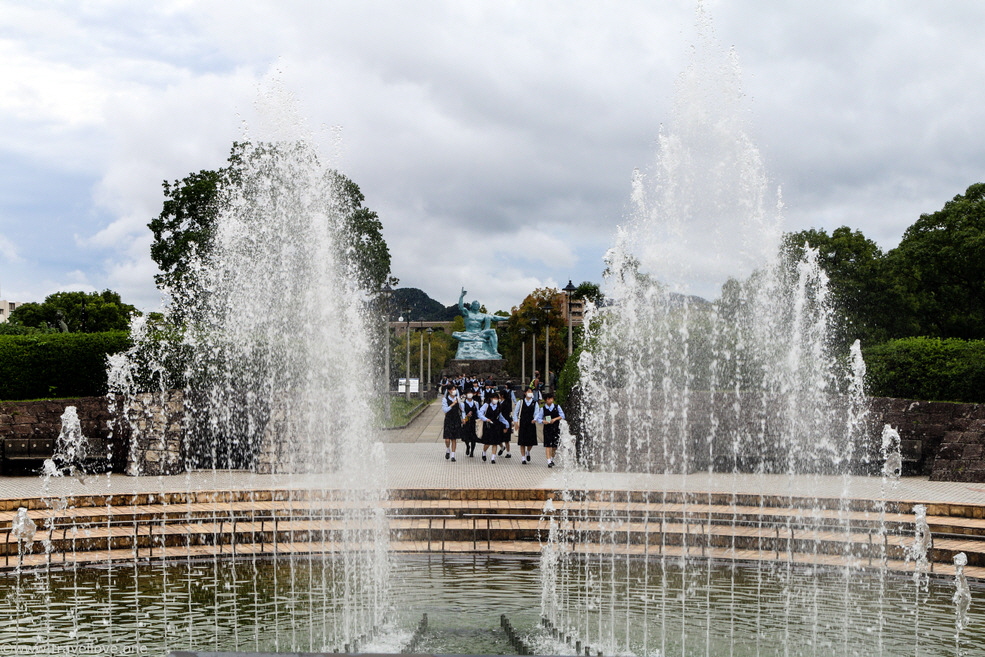
The words of a little girl were engraved on a plaque in front of the fountain: “I could not stand the terrible thirst. The water was covered with oil. I wanted water so badly that I drank the oily water.”.
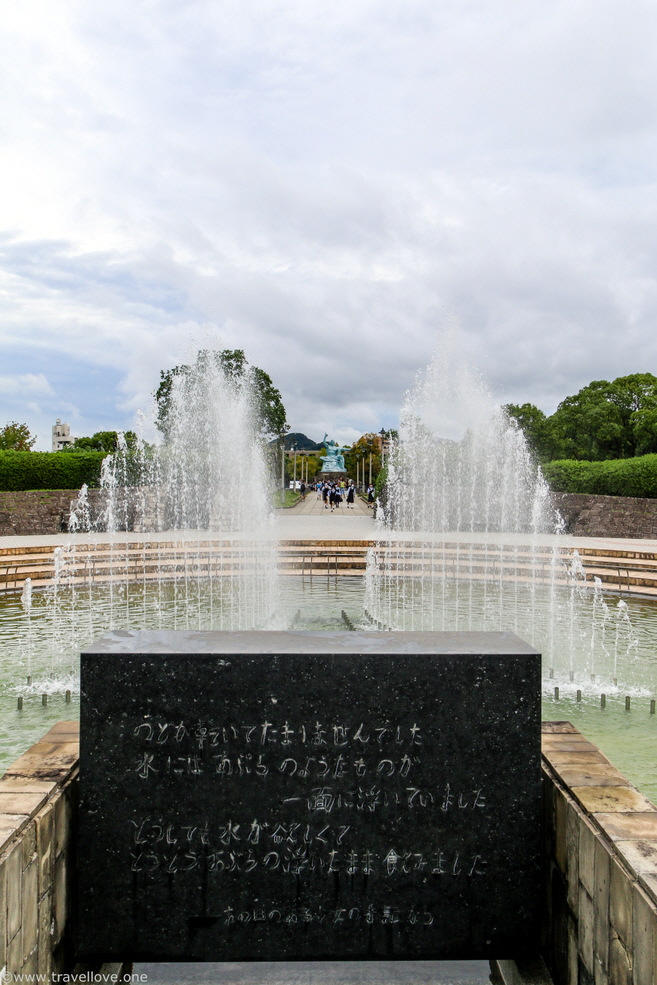
We left the park via beautifully planted stairs leading down the hill. At the end of the stairs we turned left and after about 100 meters (110 yds.) reached the entrance to the park of the hypocenter which represents the “Zone of Prayer”.
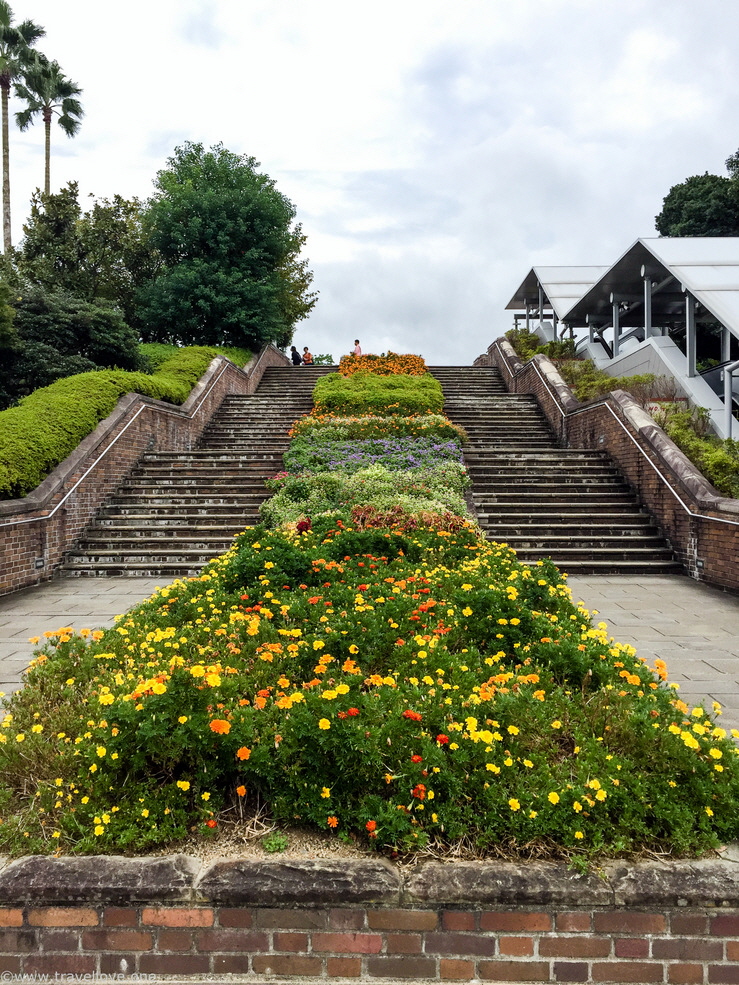
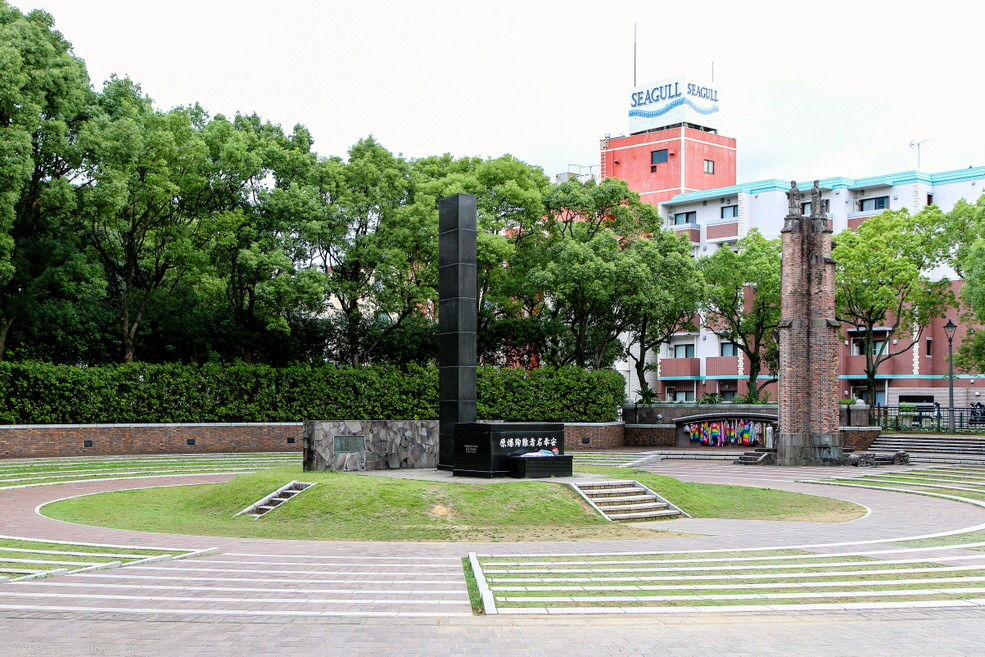
A black pillar was erected as cenotaph at the point above which the bomb exploded at 11.02 am 500 m (1,640 ft.) above the ground extinguishing countless lives.
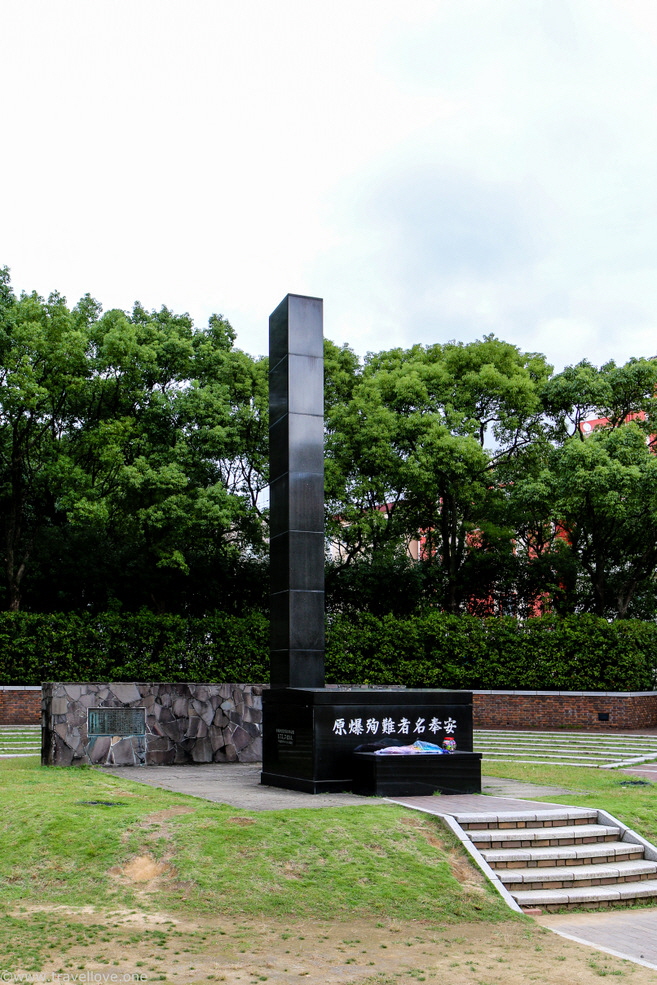
Commemorative plaques with graphics and explanations took us back to the morning of 9 August of 1945:
The night before, the bomber “Bockscar” ascends from a base in the Pacific towards Kokura, its original destination. Two reconnaissance planes fly ahead. In the early morning of 9 August, a scout reports bad weather over Kokura. The bomber still tries three approaches to the city, the pilot aborts three times. His explicit command is to drop the nuclear bomb on sight only – and the cloud cover is too dense.
Ultimately, the crew decides to fly to Nagasaki, the secondary target. But even Nagasaki is covered by a dense layer of clouds. Meanwhile, the B-29 has consumed so much fuel that its crew has to drop the bomb weighing several tons somewhere. Only if it sheds the weight does it have a chance to return to a US base. Through a gap in the clouds, 25-year-old Major Charles. W. Sweeney, the commander of the bomber, sees the buildings of the Mitsubishi Weapons Factory and drops the bomb from about 9,000 meters (30,000 feet).
The bomb misses Nagasaki’s center by several kilometers. This and the hilly urban area, where shockwaves don’t spread as well, reduce the devastations in Nagasaki, although the plutonium bomb “Fat Man” is even stronger than the one in Hiroshima.
However, nearly 75,000 of Nagasaki’s 240,000 inhabitants are killed immediately. Another 75,000 people suffer severe injuries and later die from their wounds or the consequences of radioactive radiation. To date the number of deaths is assumed to be 250,000.
Might it have been this story the teacher was telling the students in the square? The story of a morning that certainly affected the lives of their grandparents and parents and that changed the future of their country.
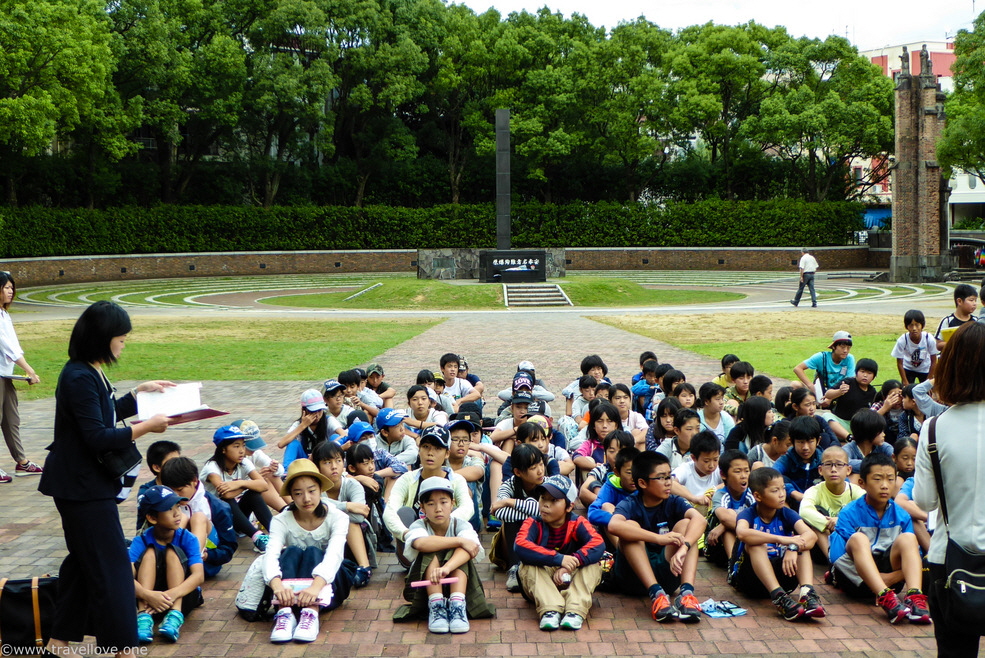
They were being watched by the statue of a mother holding her child in her arms.
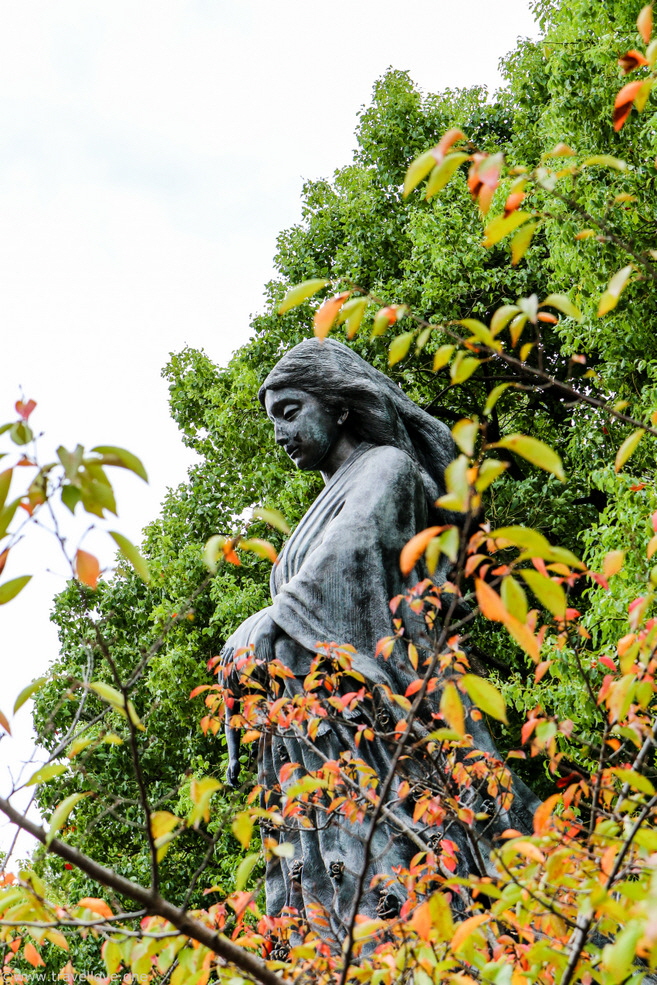
The monument by Naoki Tominaga was designed for the 50th anniversary of the bombing. It is meant as a reminder that 70% of the victims were children, women and senior citizens. Through their sacrfices, buds of peace could grow, which can be seen on the woman’s dress. The child depicts Japan on the day of the bombing, while the mother represents the countries of the world that have supported Japan in its efforts to become the peaceful nation that it is today.
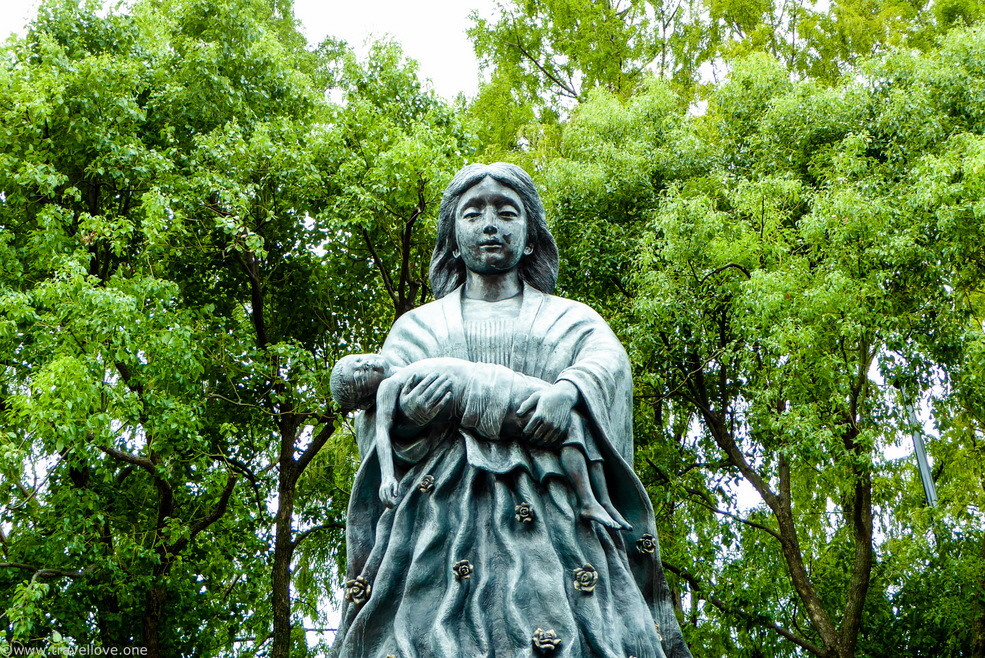
The path to the next zone goes past further monuments dedicated to different goals or groups.
The „Flame of Commitment“ for example was donated by Greece in 1983, and its fire is meant to reinforce the promise that there should never be victims of nuclear bombs again.
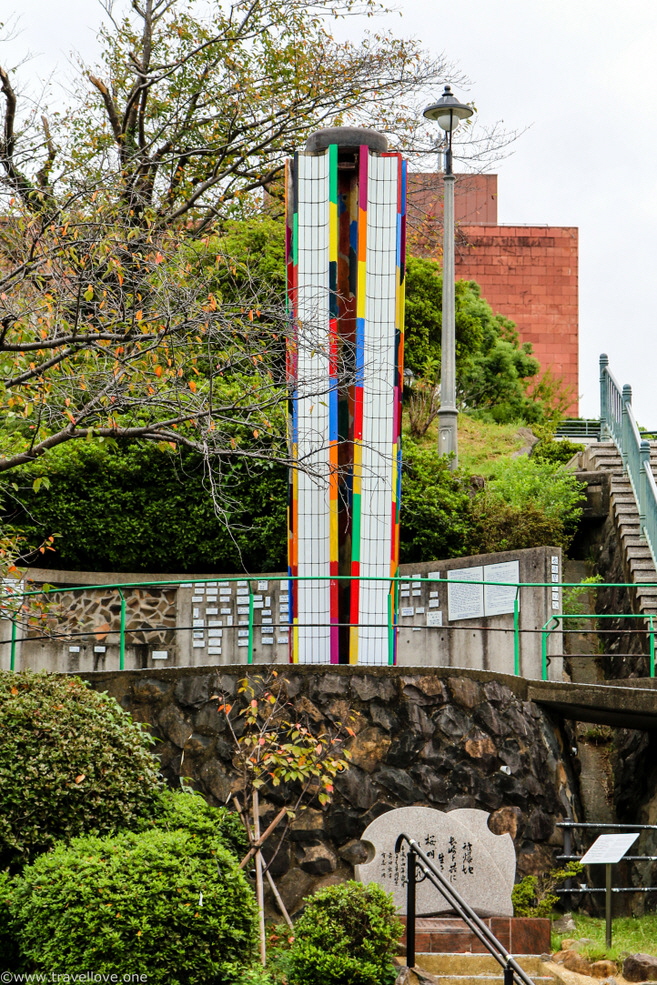
The flame was followed by monuments for deceased children, workers from different industries and for the affected Koreans.
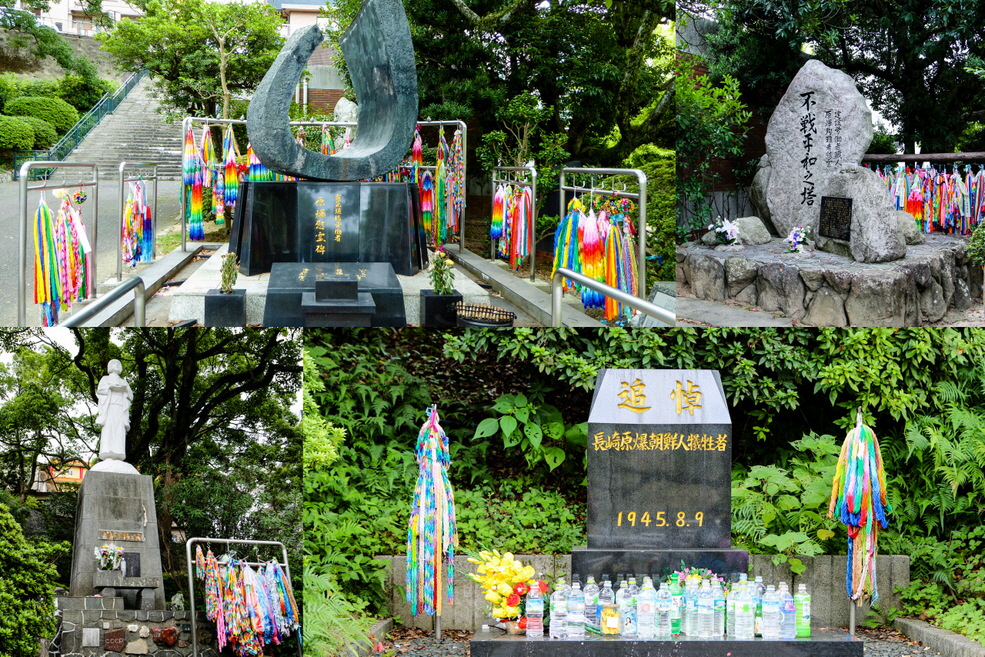
Via another stairway we reached the atomic bomb museum and thus the “Zone of Learning“.
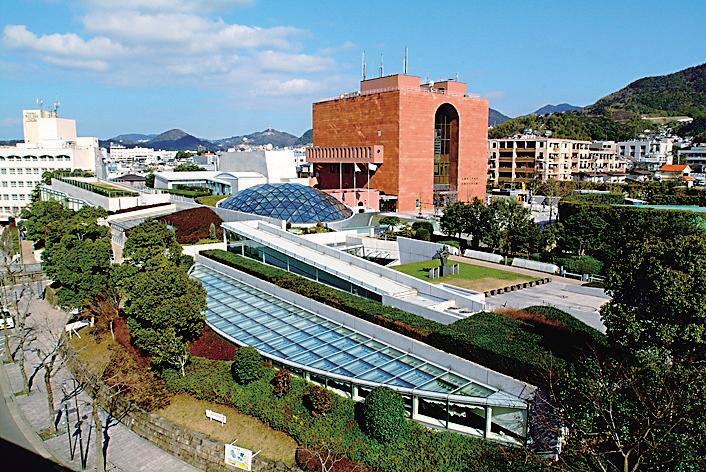
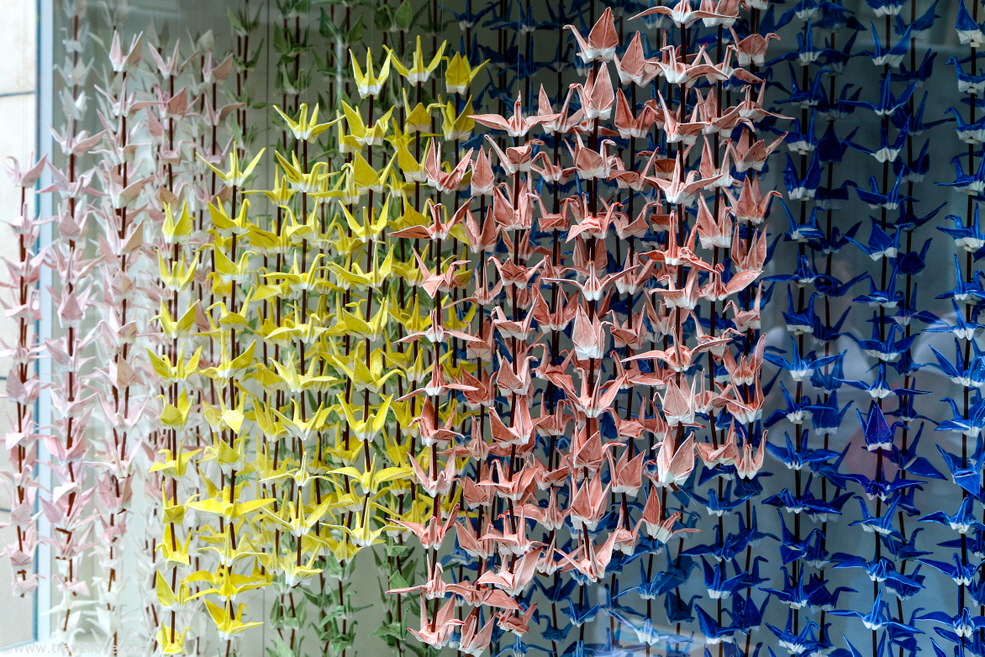
A spiral walkway led from the museum lobby down to the entrance of the exhibitions. On the wall of the spiral, the years were counted backwards until we finally reached the entrance in 1945.
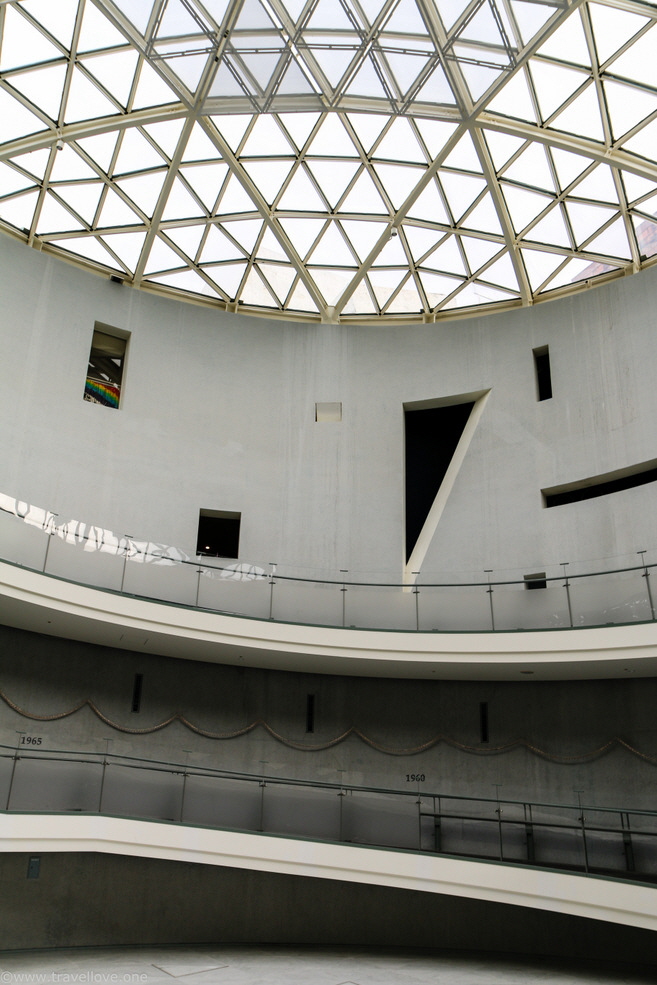
An old wall clock had frozen at the moment of the explosion. The clock illustrated that we were meant to feel like back in 1945. It is 11.02 am, the moment of destruction.
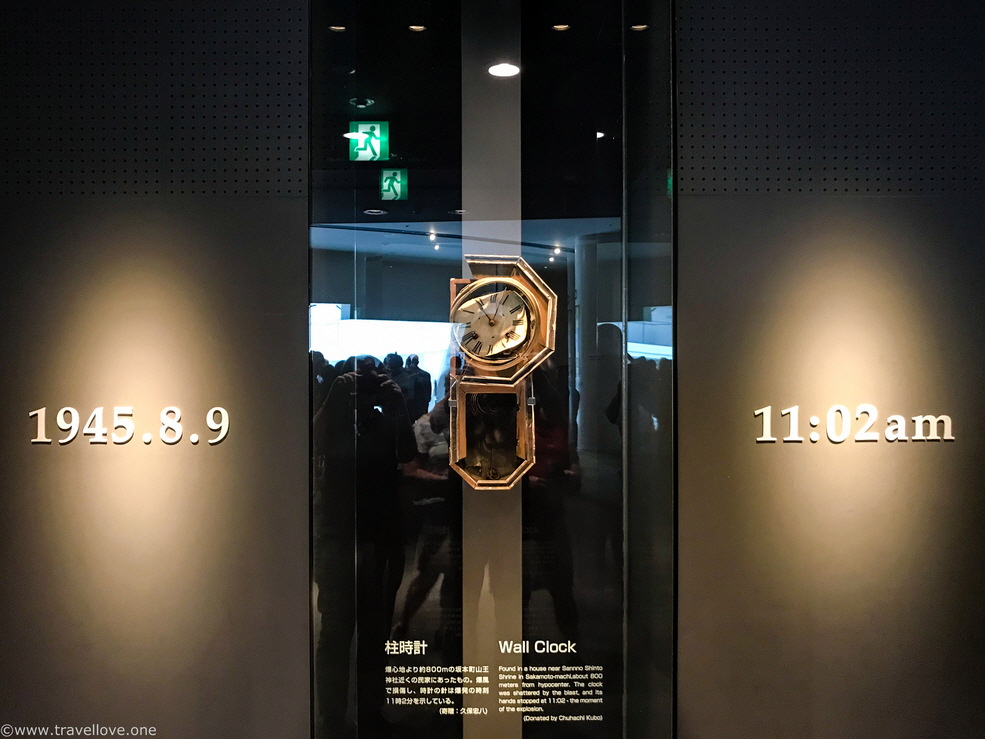
A sign behind the clock explained the mission of the museum:
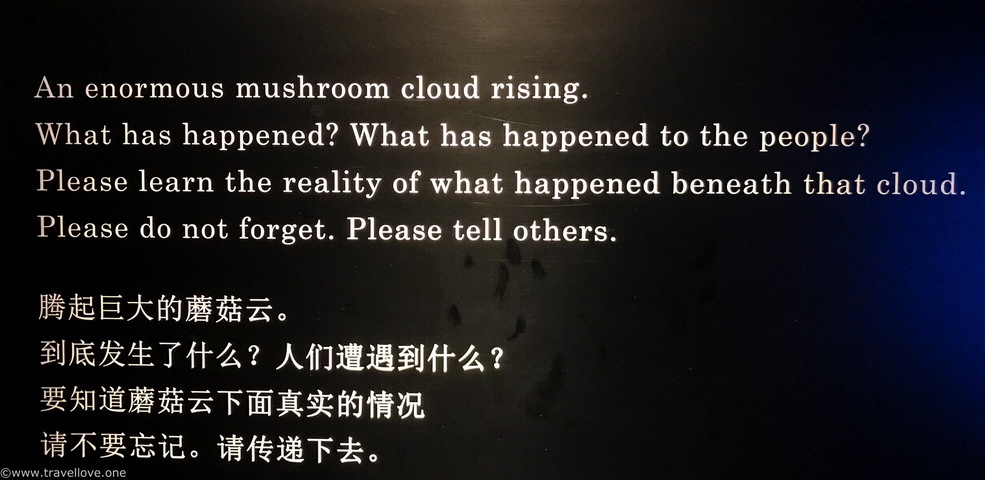
We passed a replica of the Urakami cathedral which was near the place where the bomb had detonated.
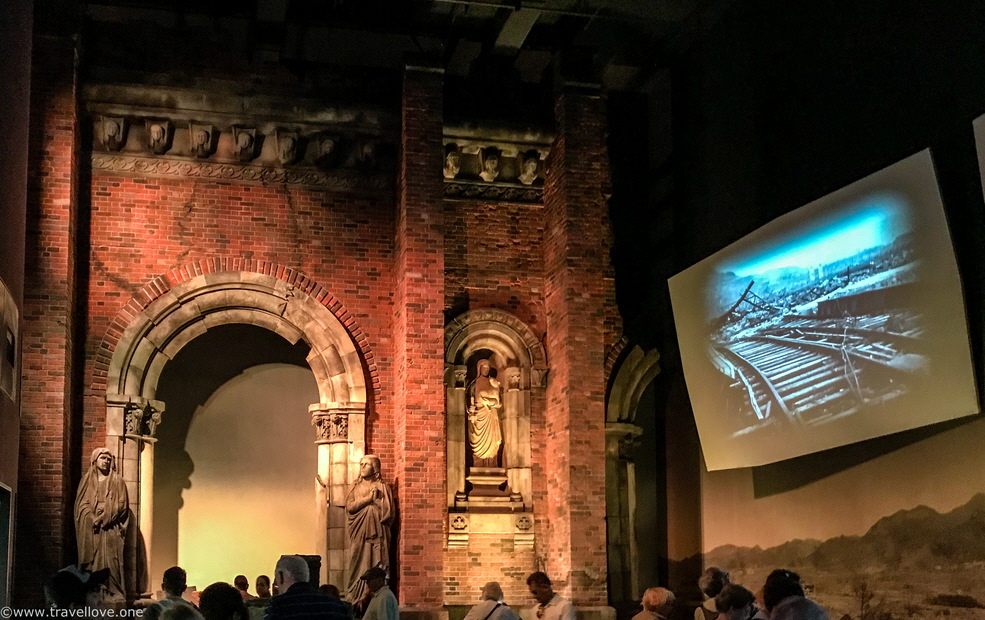
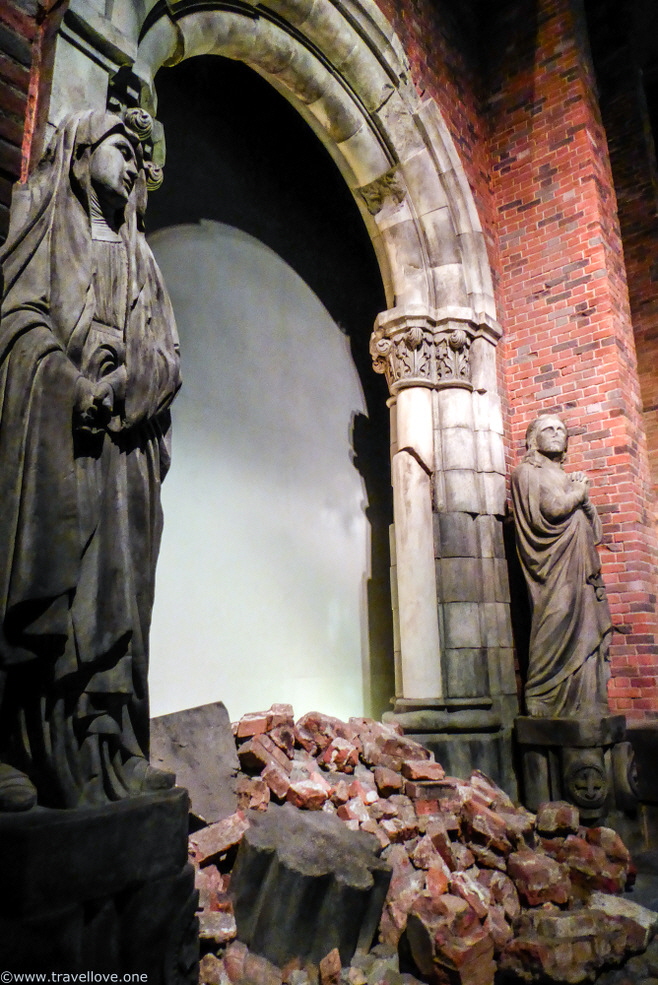
Screens with photos installed between the rubble gave the impression that we were at the moment of the explosion. As in Hiroshima, the photos were sometimes very brutal but depicted the terrible reality.
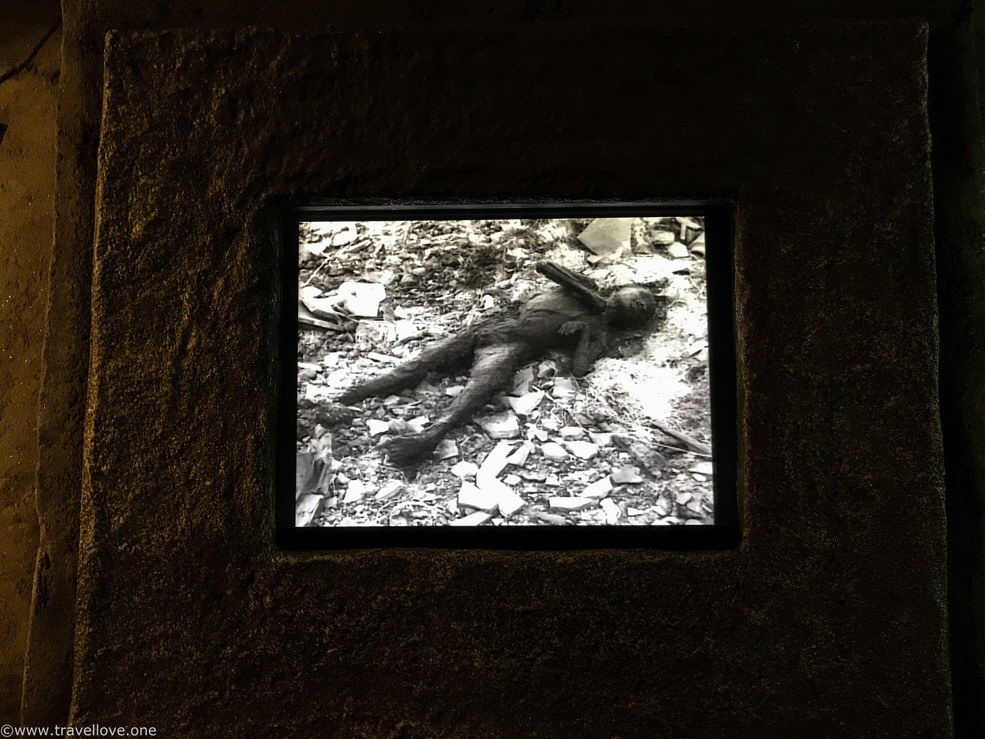
I read somewhere „Experiencing the unimaginable up close“. And that’s how it felt. You could see many visitors silently shaking their heads at the sights. Some reached for handkerchiefs and wiped tears from their eyes. This sight left nobody cold. It wasn’t a film, it wasn’t fiction – this horror was reality, it had really happened.
The next room showed the technology of the bomb itself and the unimaginable effects of its devastating explosion.
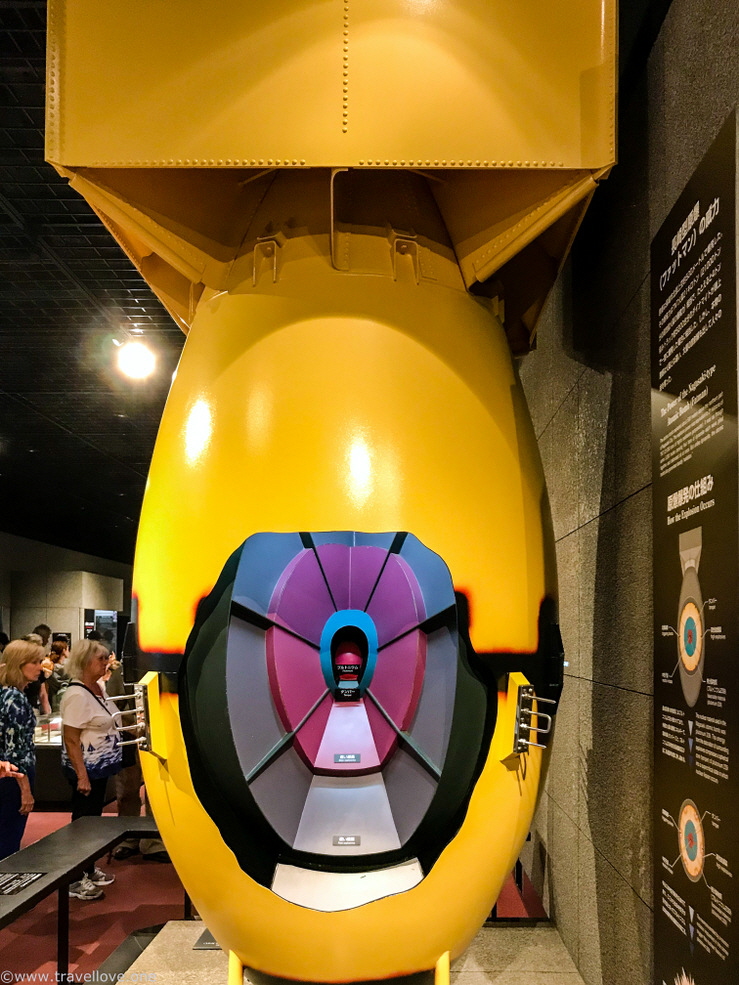
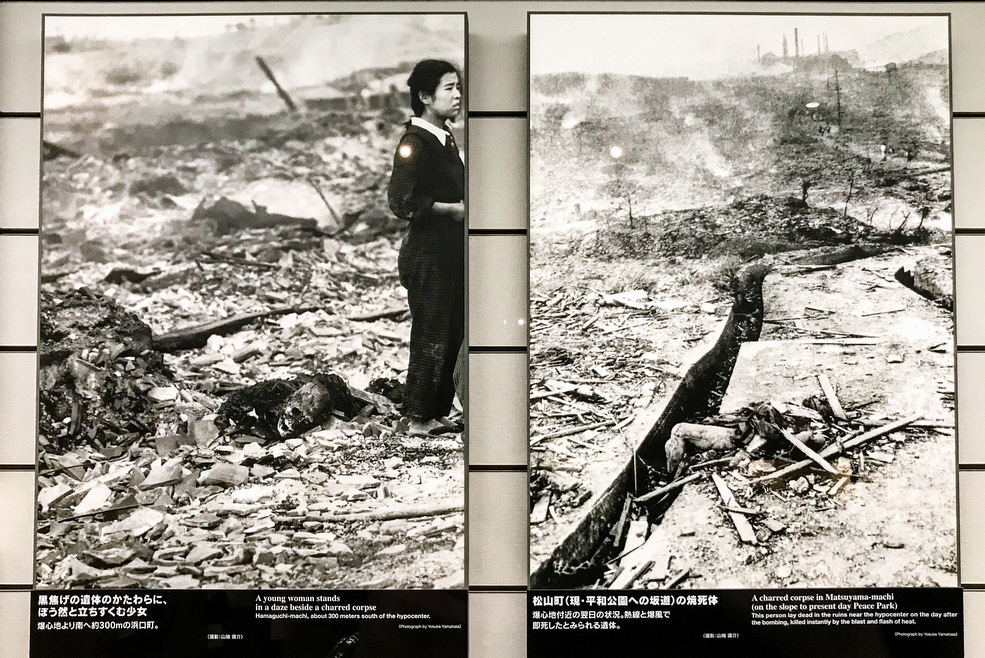
The exhibition wasn’t limited to photos, but also showed findings that demonstrated the tremendous power of the bomb. Among other displays, there was a lump of glass in the center of which you could see the remains of a human hand. The glass had instantly melted from the heat and enclosed the hand, while the rest of the body virtually evaporated.
In adjacent rooms films were shown and the walls featured testimonies of survivors. Everything had one common message: Never let it happen again!
The next room dealt with the nuclear tests that have been carried out since then and the resulting contamination of the environment. Statistics and charts showed the estimated number of nuclear weapons existing today.
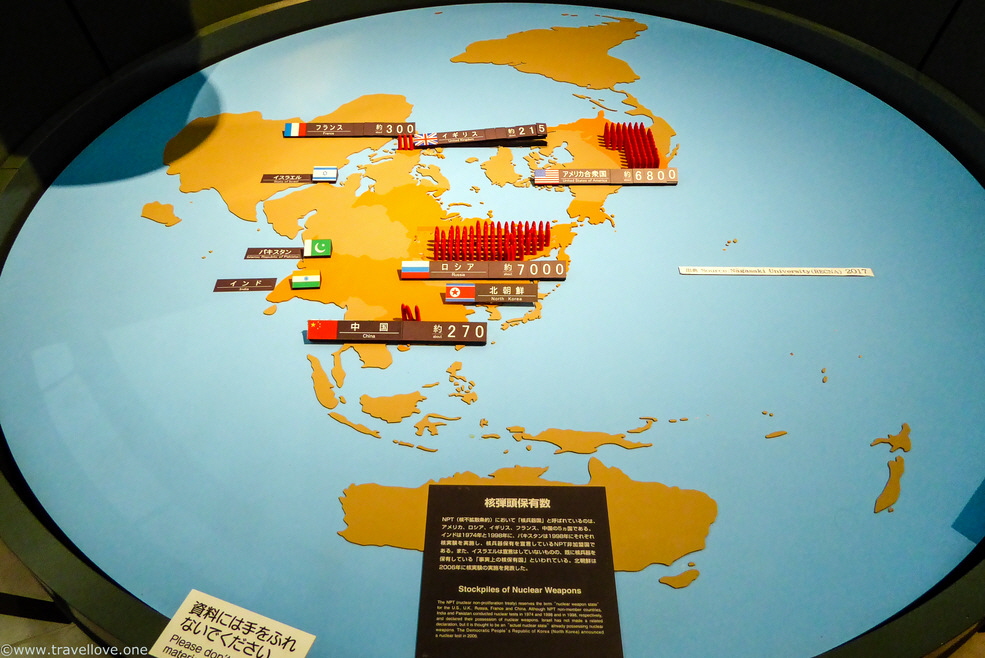
In two different places we had seen in recent days what each of these weapons was capable of more than 70 years ago. Seeing these numbers now was inconceivable.
Pictures made of paper cranes saw us off with a clear message, and we could only nod our heads in silent agreement.
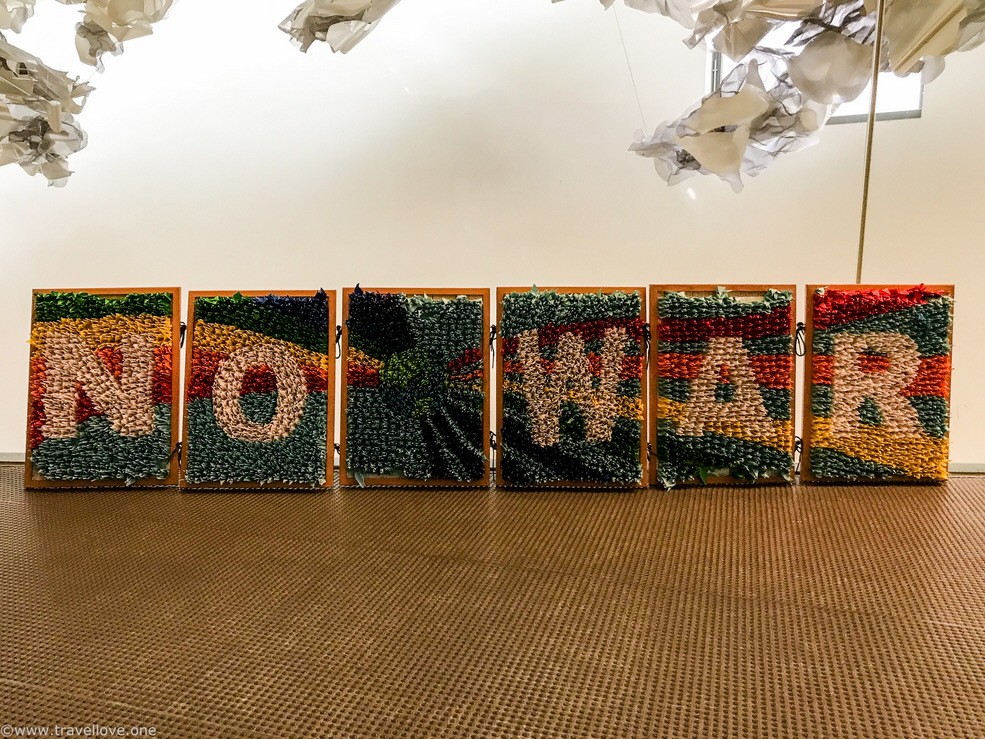
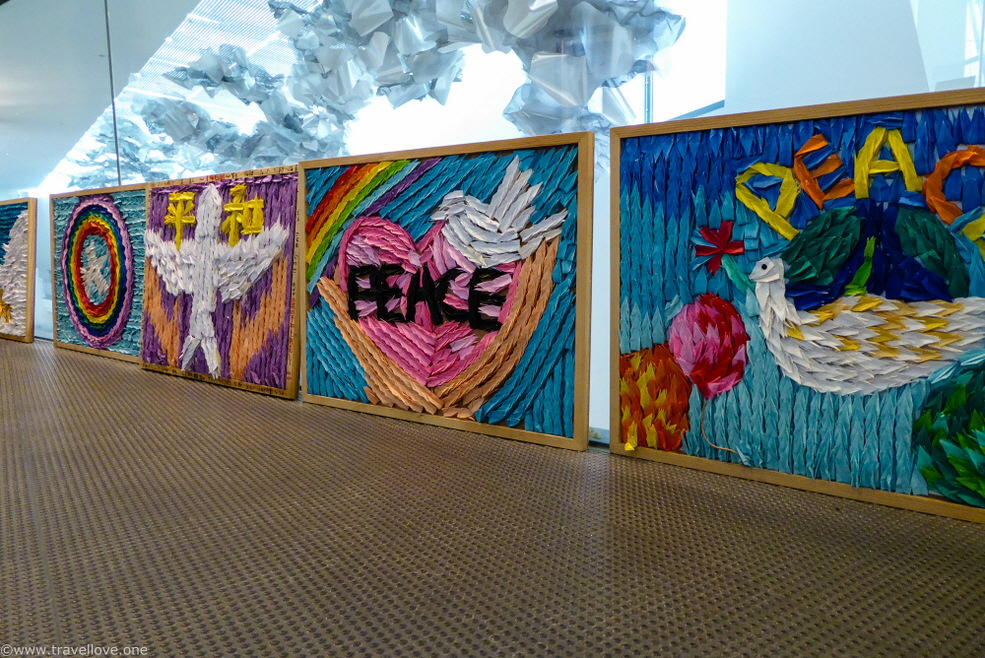
With my tales of Hiroshima and Nagasaki and the explanations of the individual monuments, some may think I exaggerated and that I am an idealist or a dreamer. In fact, I am more of a pragmatist and realist. But this is precisely why I must recognize which point humanity has reached again, despite its history. Therefore, visiting these places is something I can only recommend. Here everybody understands: in this horror there can be no winners!
The next tram stop was just a few minutes from the museum, and we took a tram back to the city center.
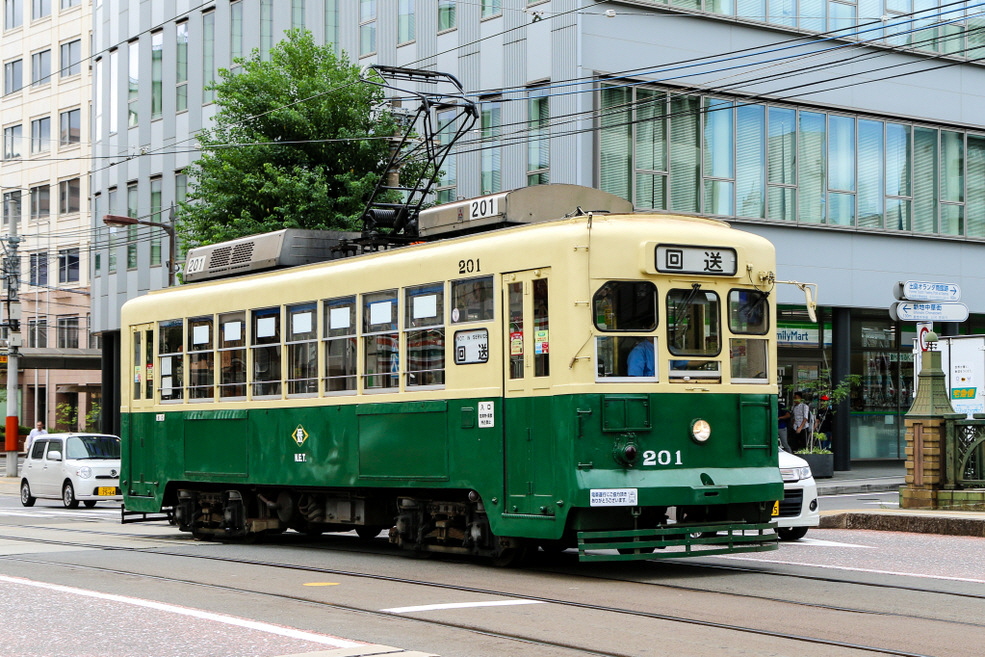
We got off at the Tsukimachi stop. From here it was just a 2-minute walk to the entrance of Chinatown. You really couldn’t miss it...
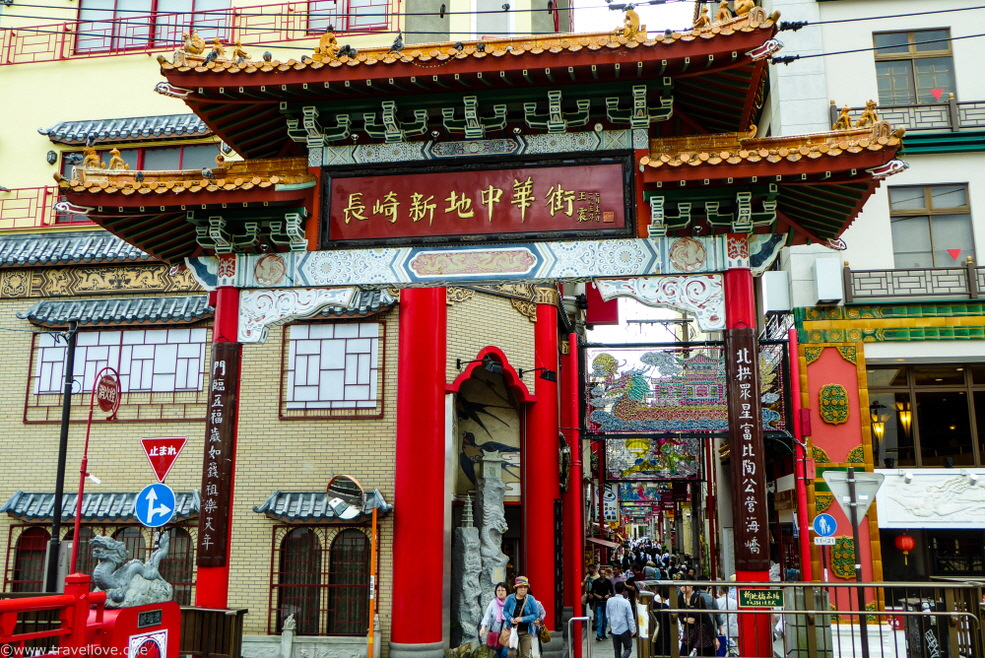
In front of the big gate we asked a group of children whether they’d take a photo of us, and a boy agreed to do it.
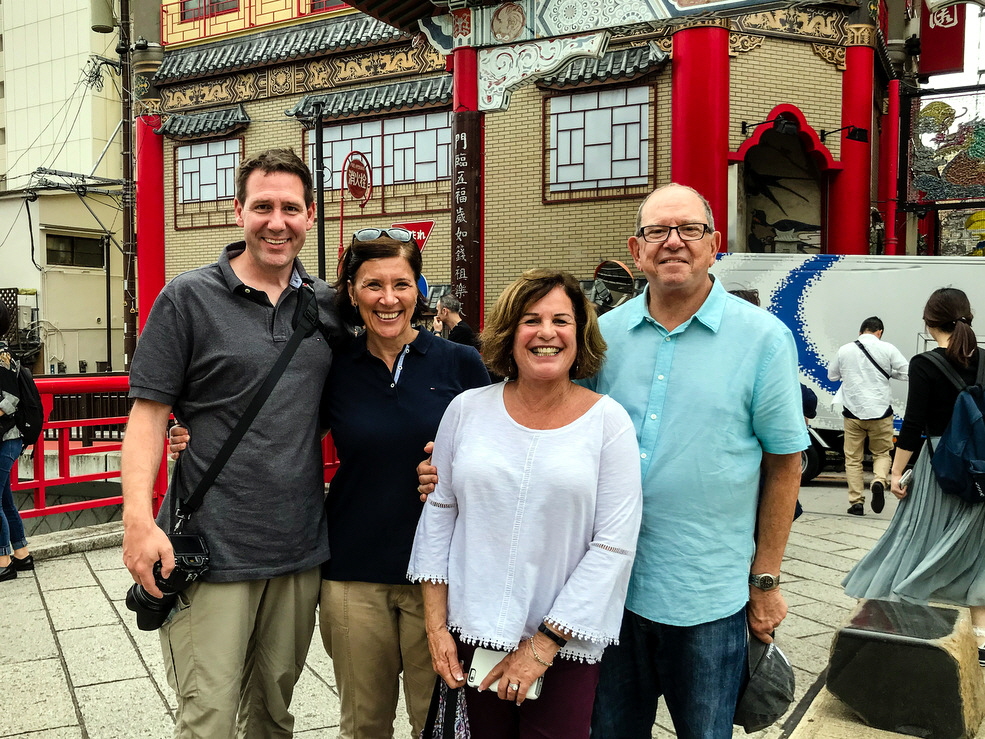
As he was taking the picture, all the others were laughing and making faces. We suggested he take a picture with all of us … And they were immediately up for it.
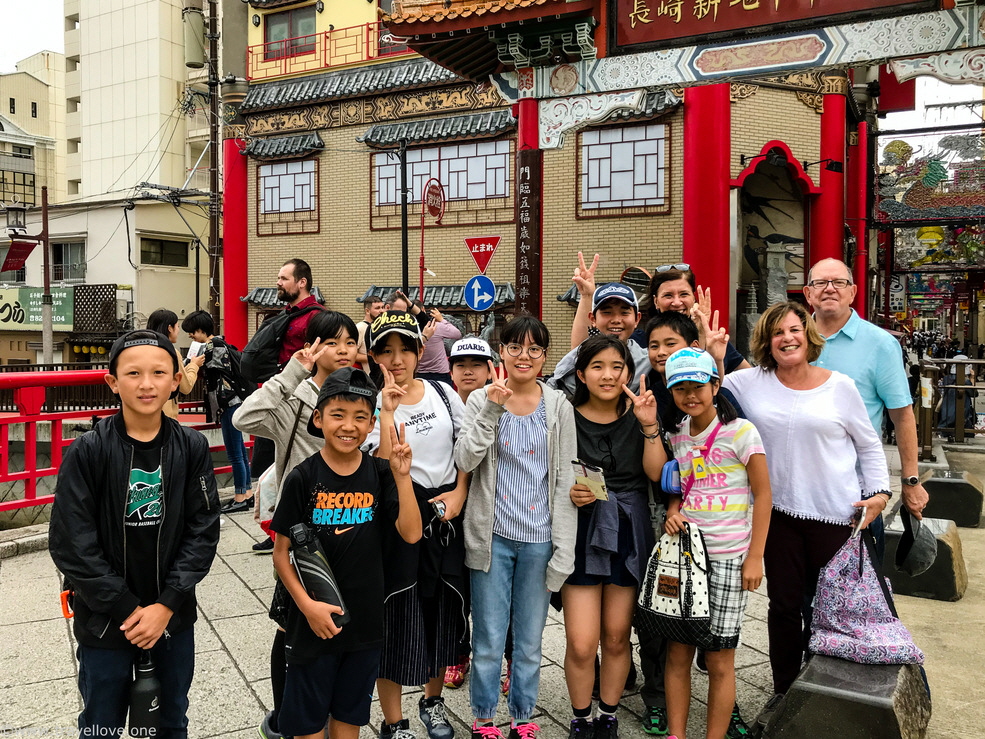
We followed the street further. As in every Chinatown, the streets were lined with restaurants and stalls selling a variety of food. What they all had in common was their tempting smell.
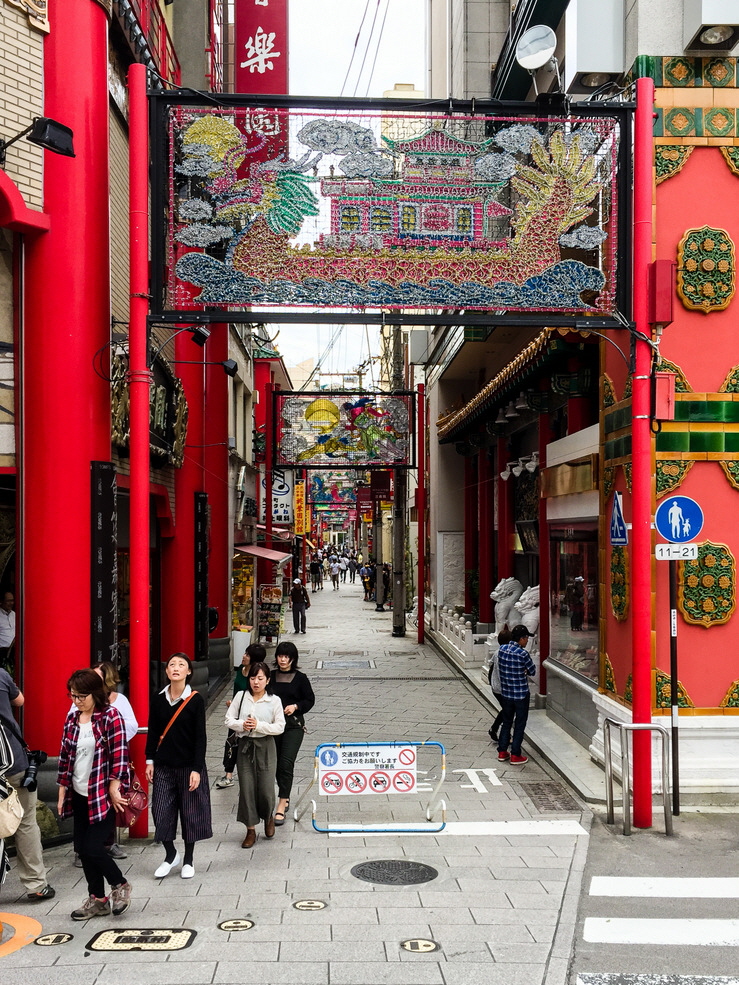
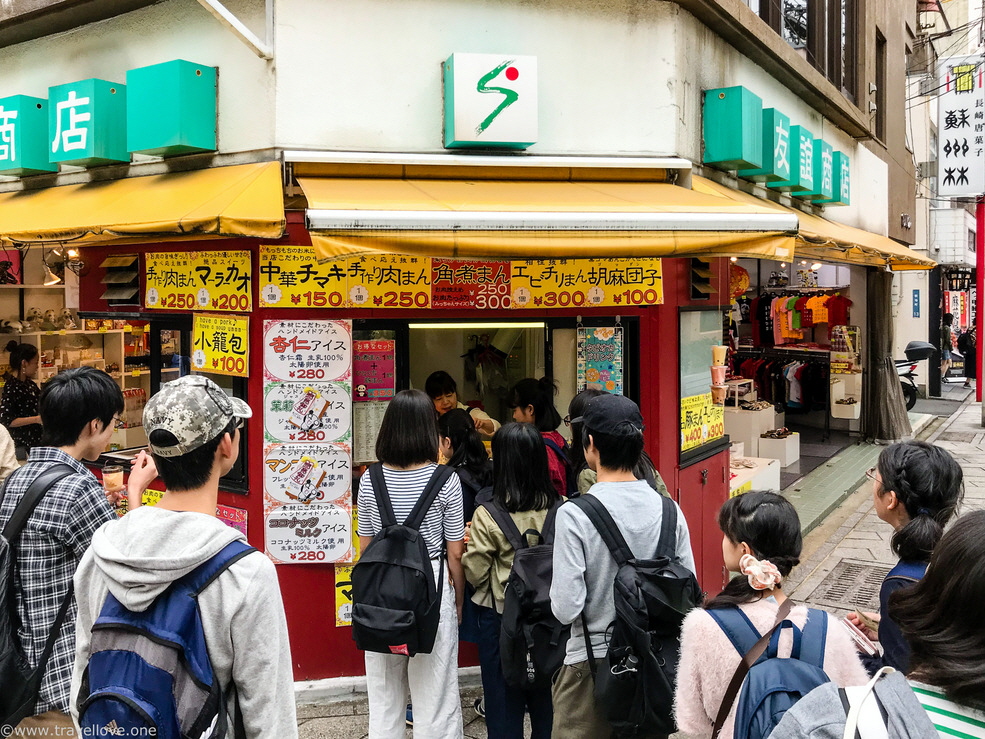
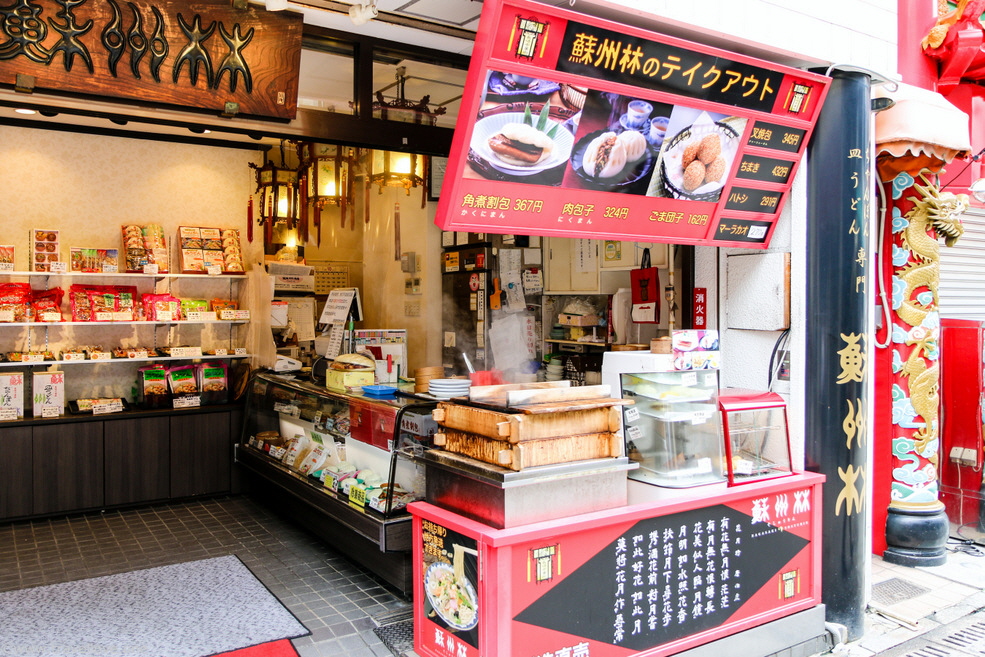
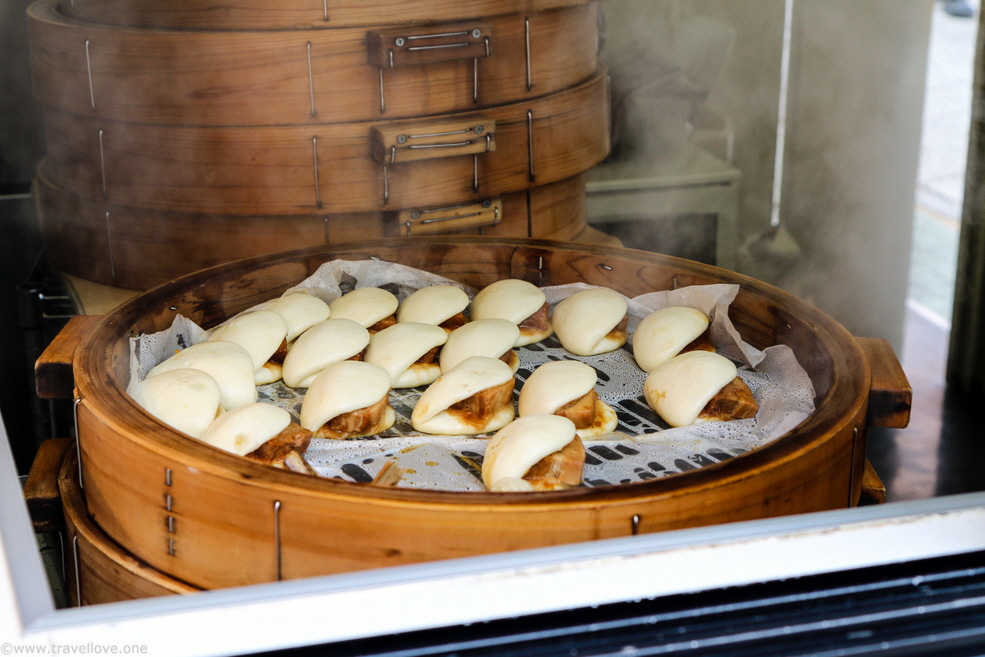
Minato Park marked the end of the street, where some men were playing Mah-Jongg.
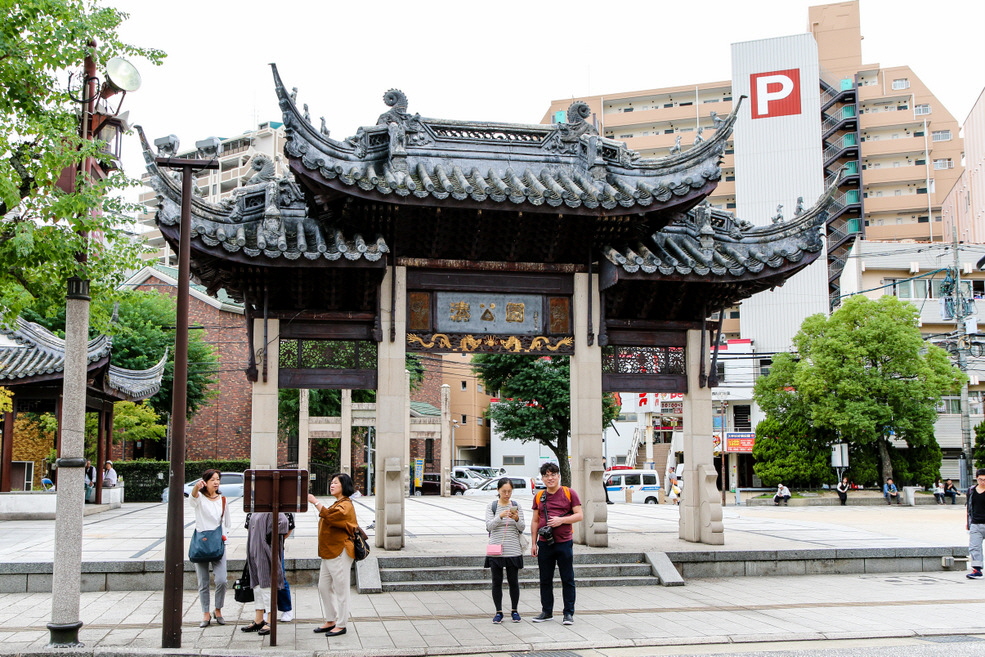
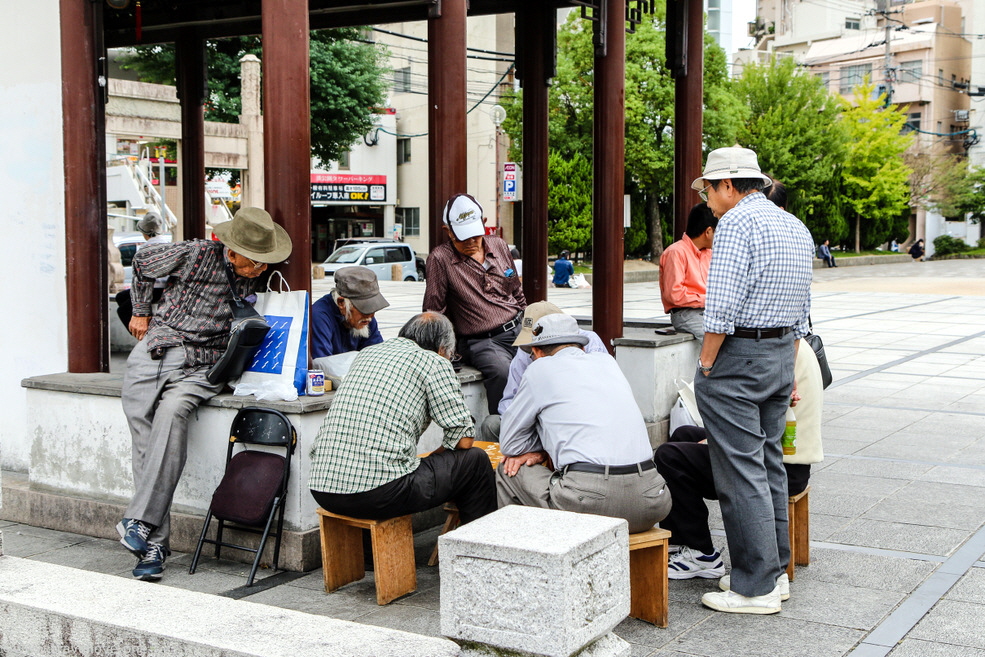
Meanwhile we had become quite hungry from all the delicious smells around us. So we turned around and went to one of the Chinese restaurants.
Thanks to the illustrated menu the choice of food was easy.
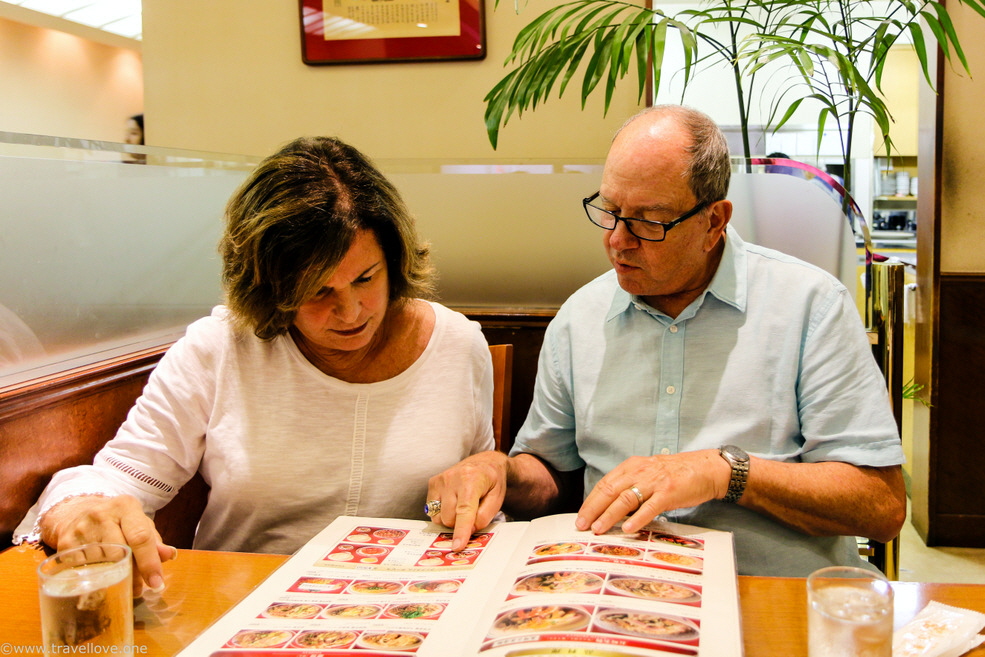
It was nice to take a little break. We weren’t pressed for time, as the port was only about 1 km (0.6 m) away. So we enjoyed a delicious meal but tried to leave some room for dessert.
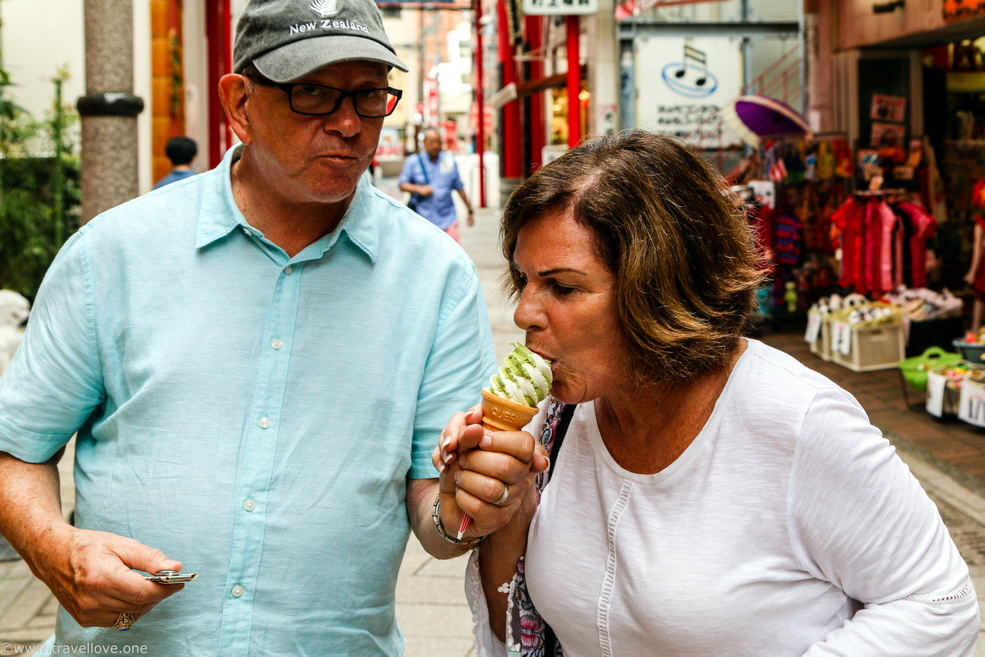
Our way to the city took us past the so-called „Dutch Slope“.
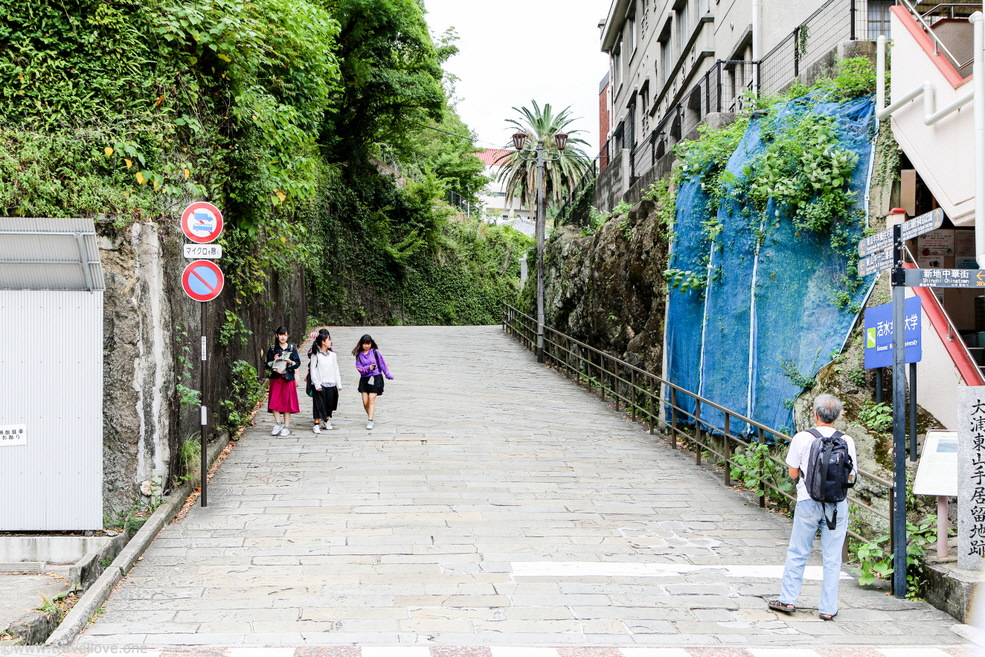
After the city’s port was opened for trade in 1859, many merchants hat set up their establisments along this street. Since during the two centuries before the opening the Dutch were the only Western foreigners allowed in the country, all people of Western origin were called “Dutch”.
A few minutes later we were in the center of town, from where we could already see the ship.
On the right side of the road was the Chanpon Museum, dedicated to a Nagasaki noodle specialty. Besides the museum, it also hosts a Chanpon restaurant.
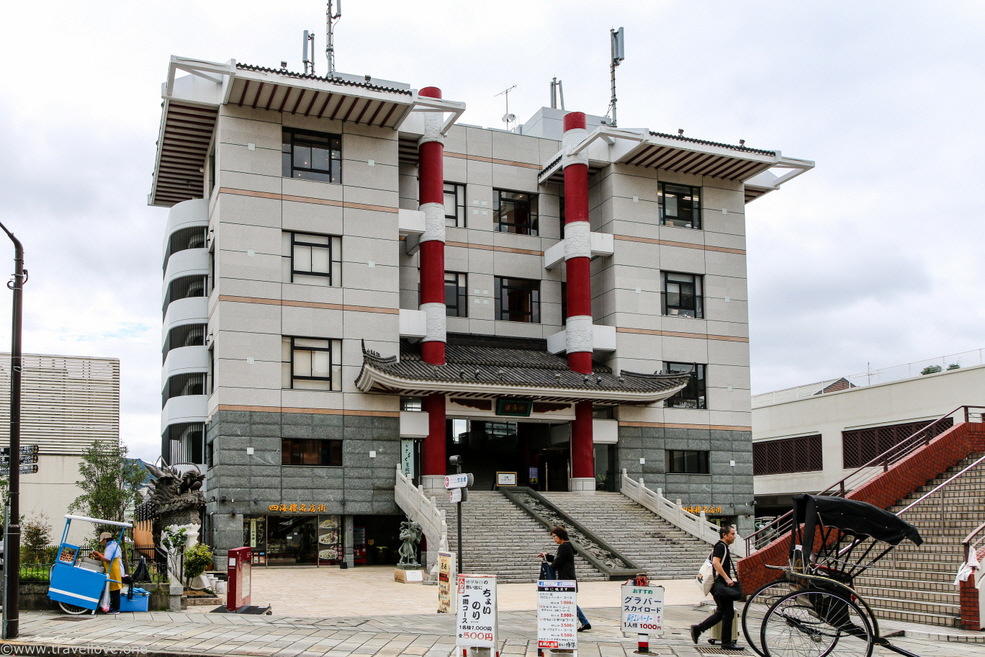
To the left, a street led up a hill towards Clover Garden. Lined with souvenir shops, it first led towards Oura church.
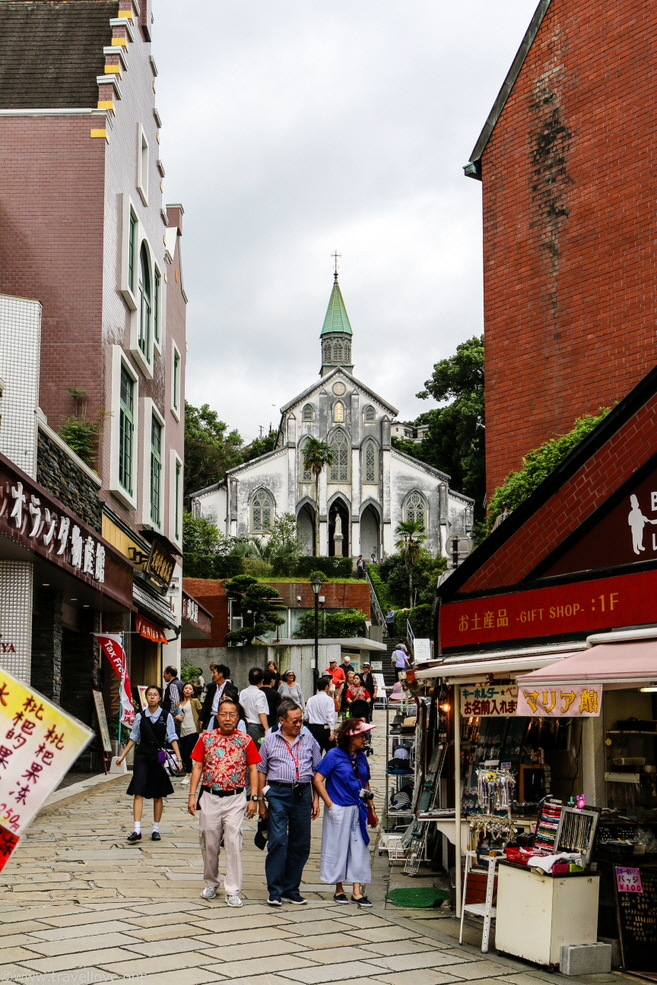
The church is also called the „Basilica of the twenty-six Martyrs of Japan“ because it was built in 1864 in honor of nine European priests and seventeen Japanese Christians, who were crucified on the order of Toyotomi Hideyoshi in 1597.
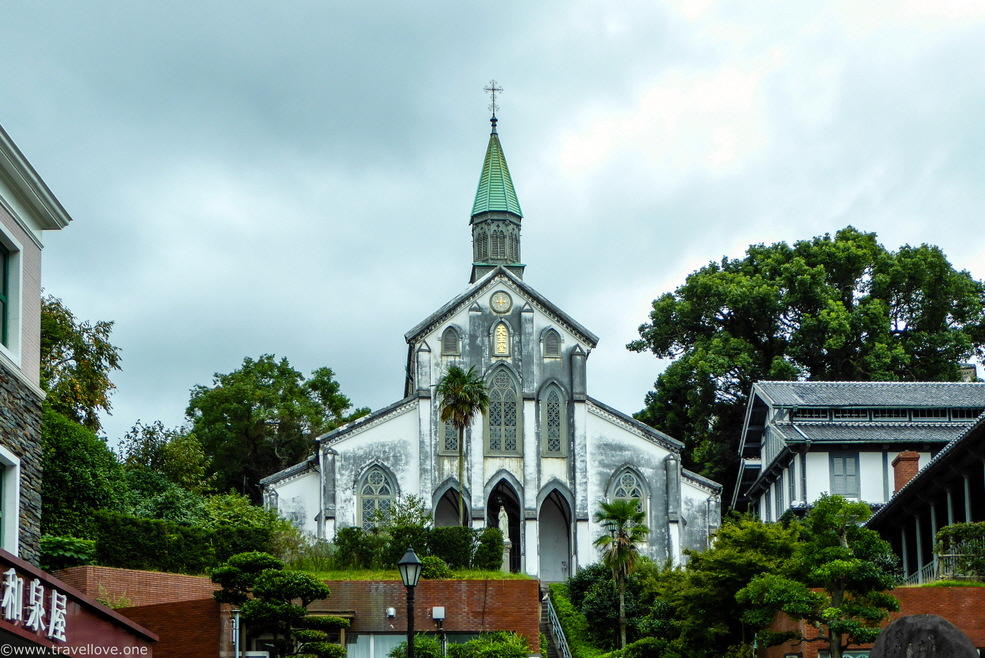
Next to the Picture Book museum, which looked like out of a picture book itself, the street was lined by shops selling Castella cakes. The sponge cake originally brought to Japan by the Portuguese was offered like precious gold bars and the shops were reminiscent of shiny duty-free shops in airports.
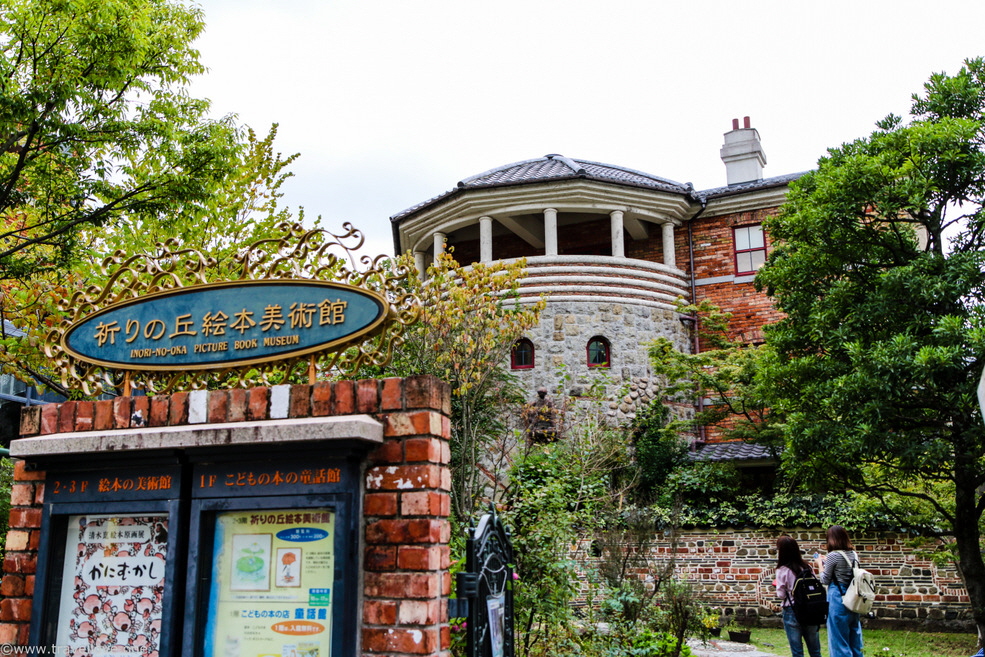
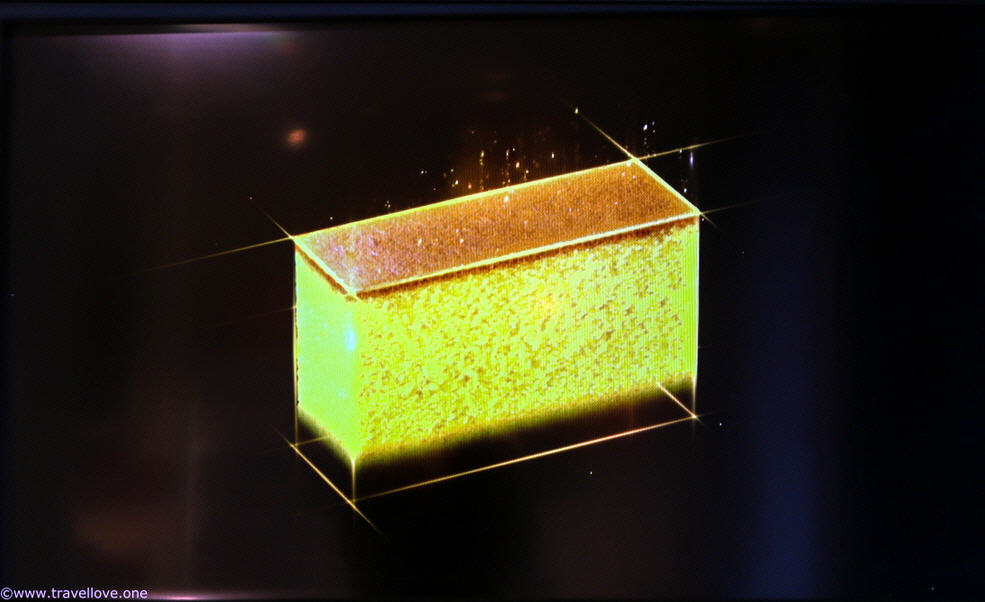
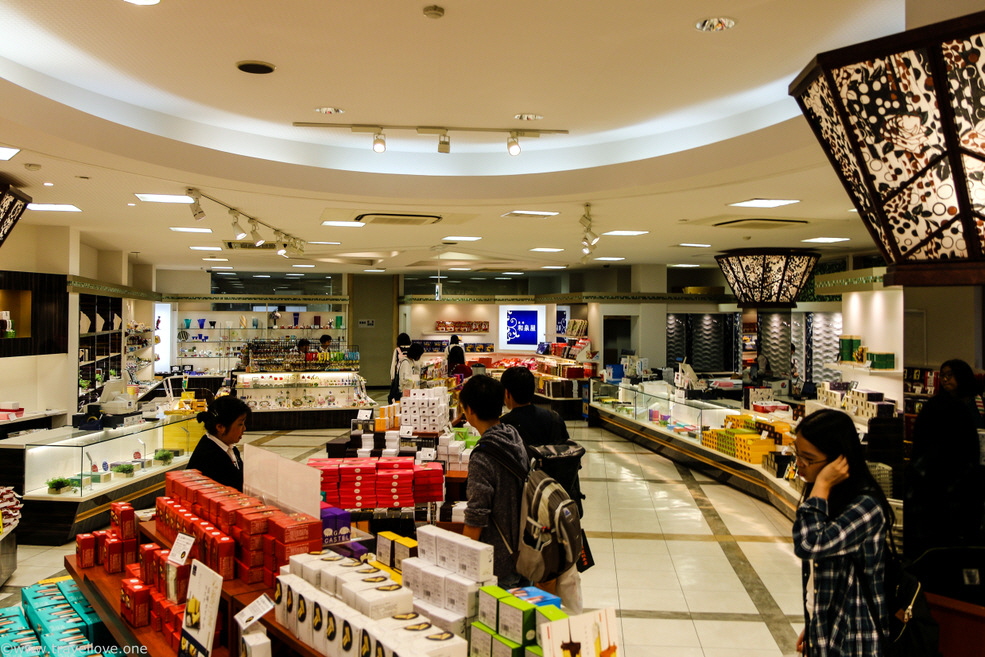
At the top of the hill we reached Clover Garden.
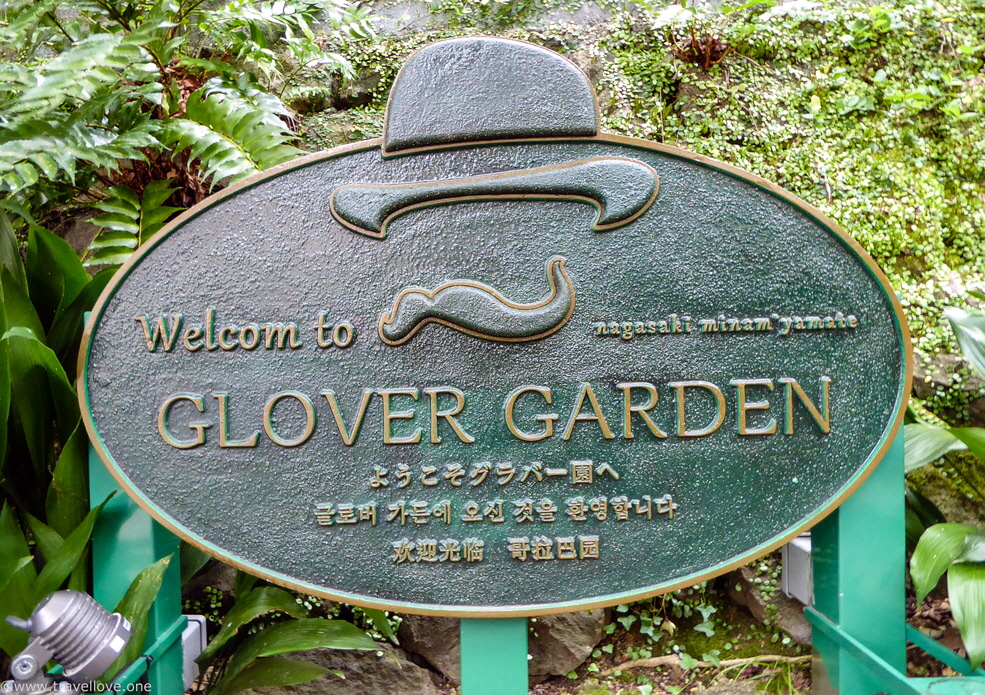
Its founder, Thomas Blake Clover, had come to Japan in 1859 and came to fame as he contributed greatly to the modernization of Japan. He is also considered the father of Japanese beer.
Because of his brown eyes, his beard and his red face, the workers of his coal mine called him „Red Demon“. But due to his warmheartedness and his appreciation of his employees, he was very well respected.
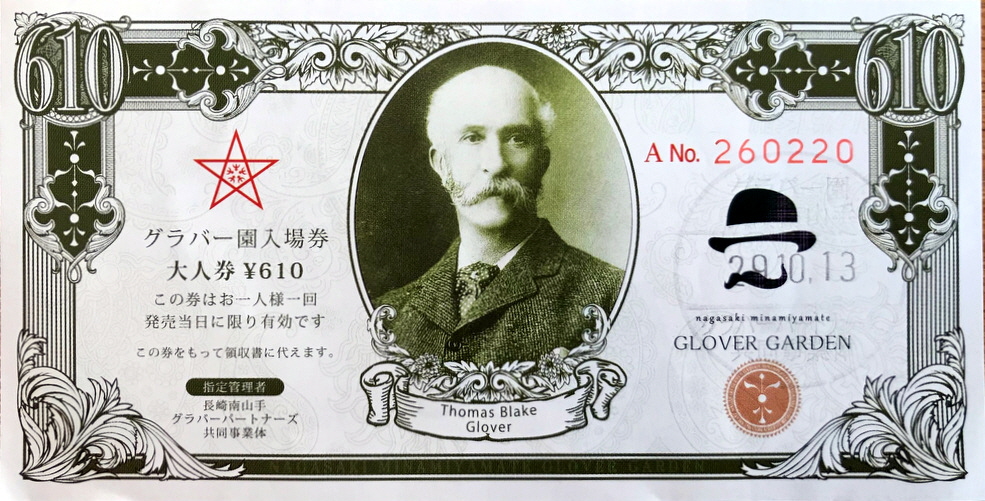
Clover Garden not only includes the grounds of the former residence, but also the houses of other Western industrialists as well as the President of the Court. The houses are all hidden in a beautiful garden.
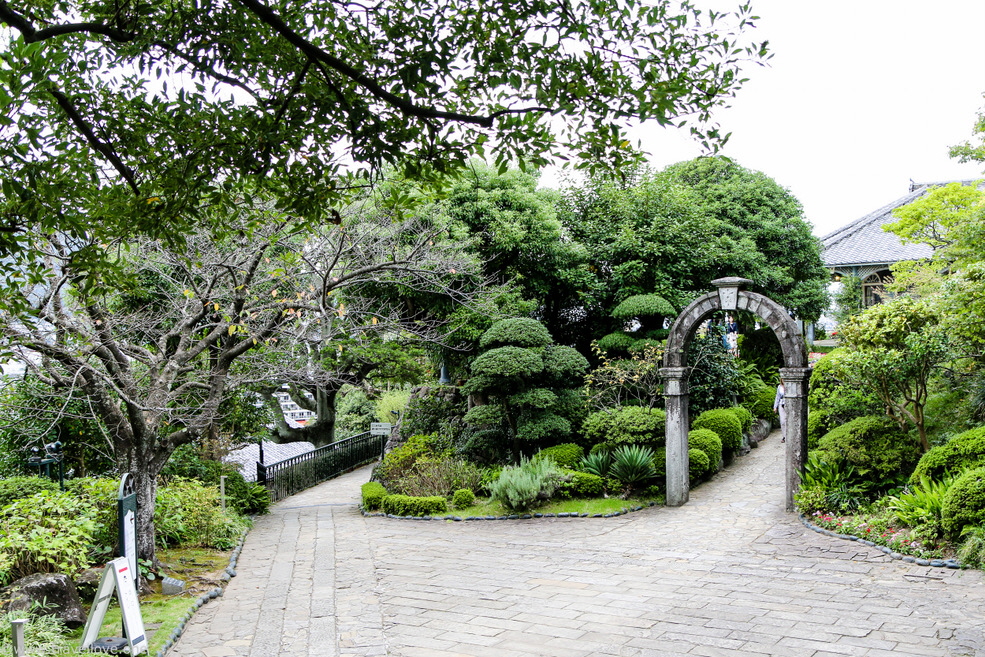
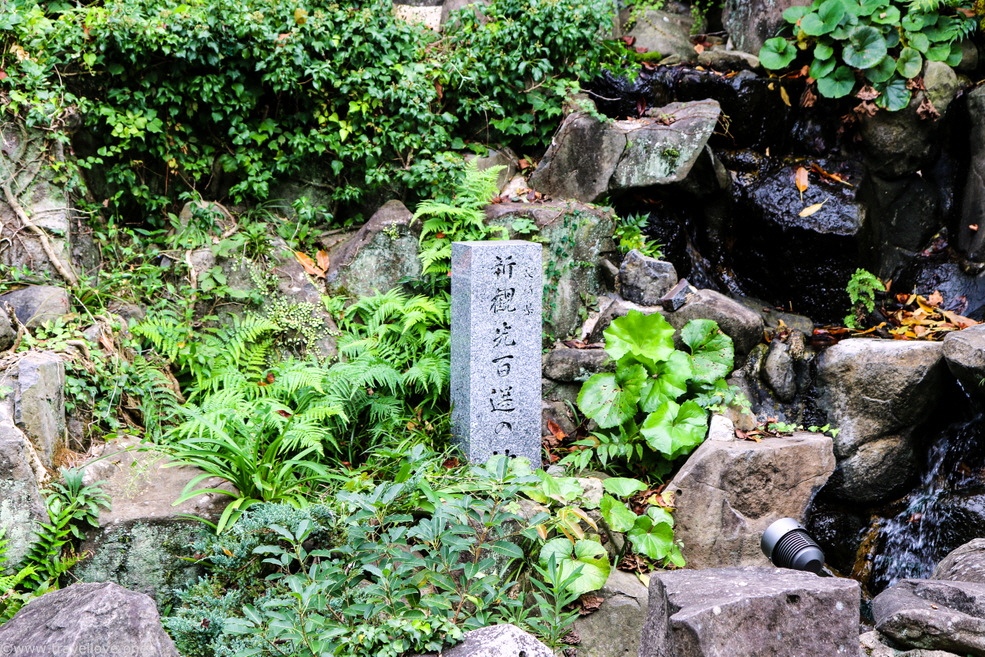
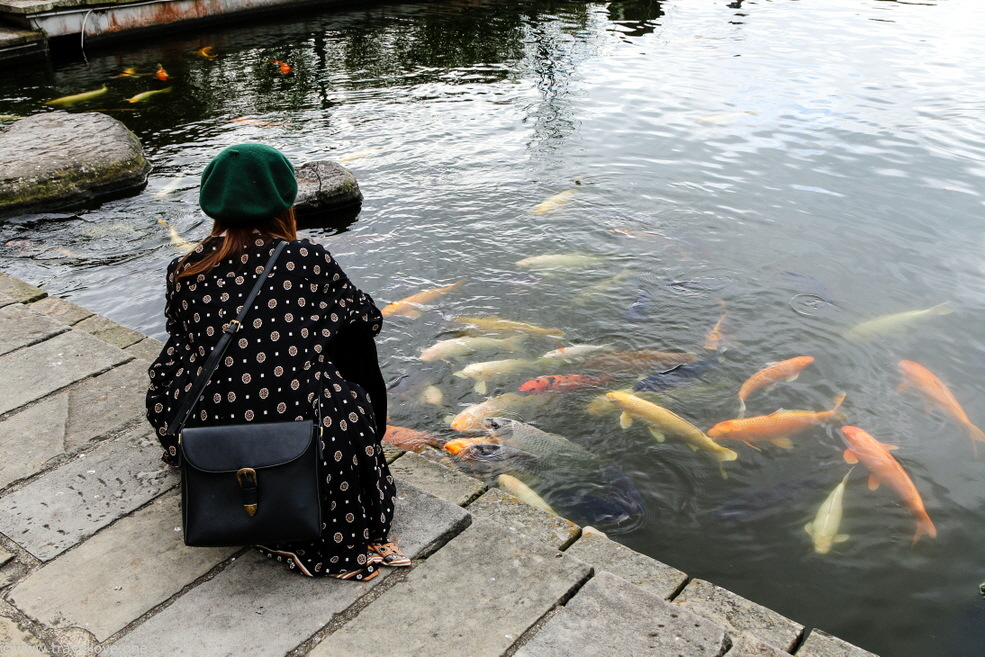
From the Glover House terrace we had a beautiful view of the bay and the Millennium lying in port.
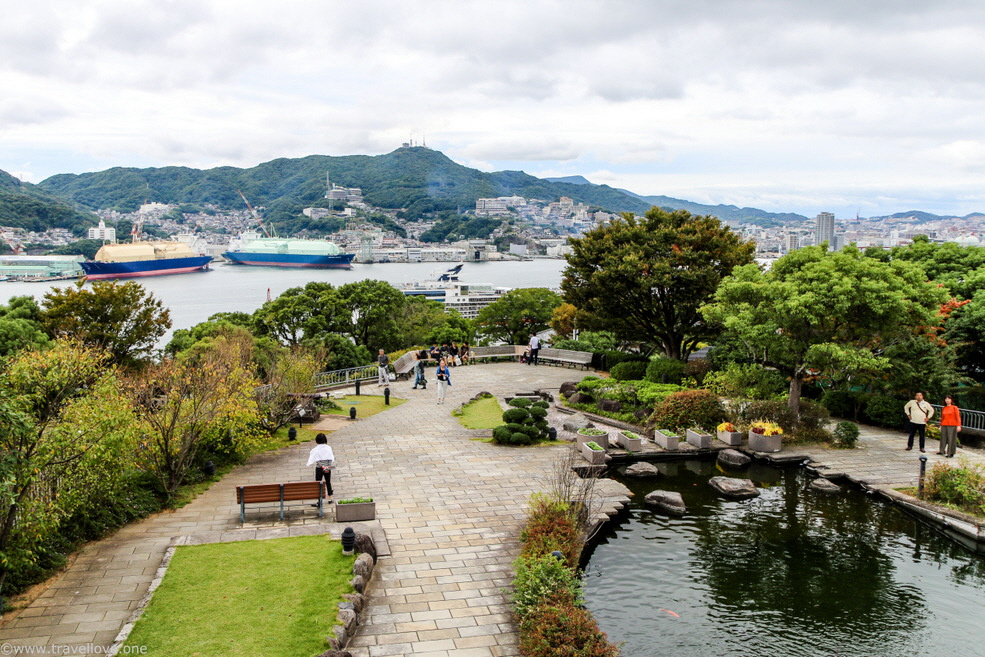
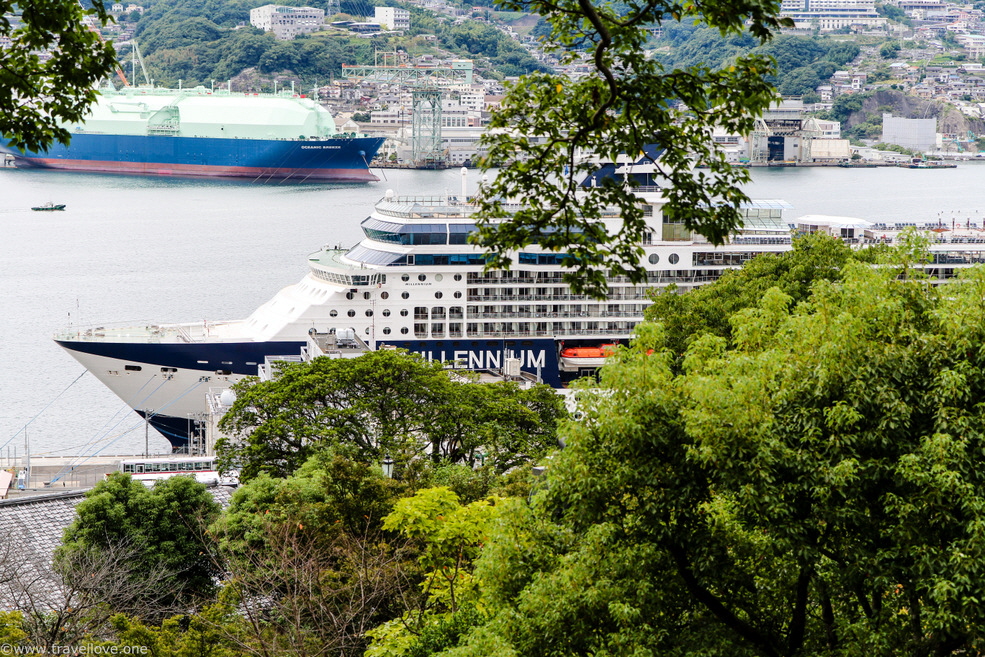
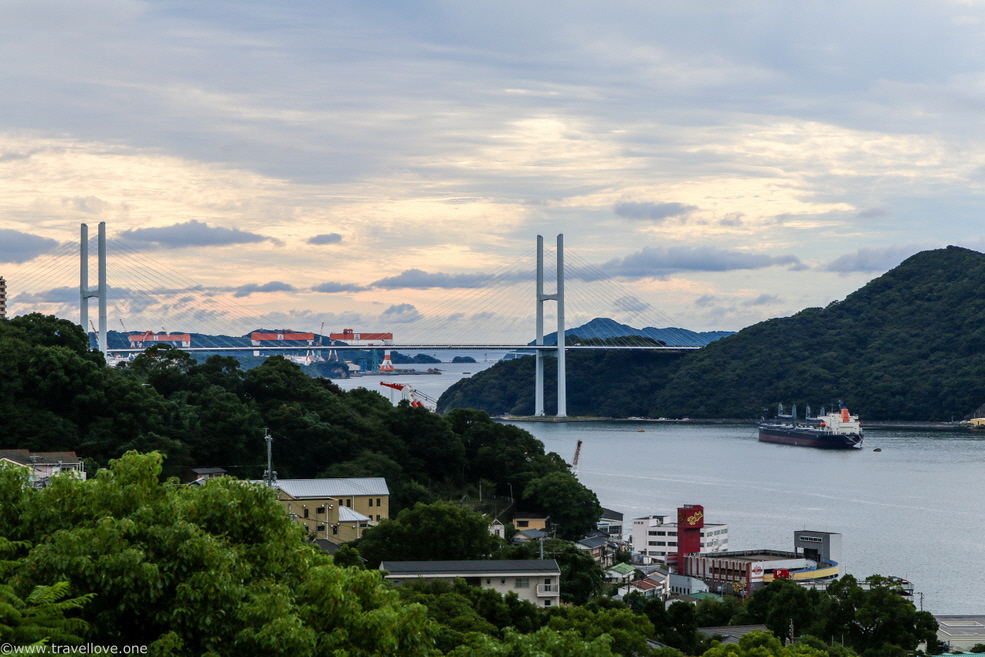
The Museum of Traditional Performing Arts was the exit of the museum. It displayed chariots and dragon figurines used at the Nagasaki Kunchi Festival.
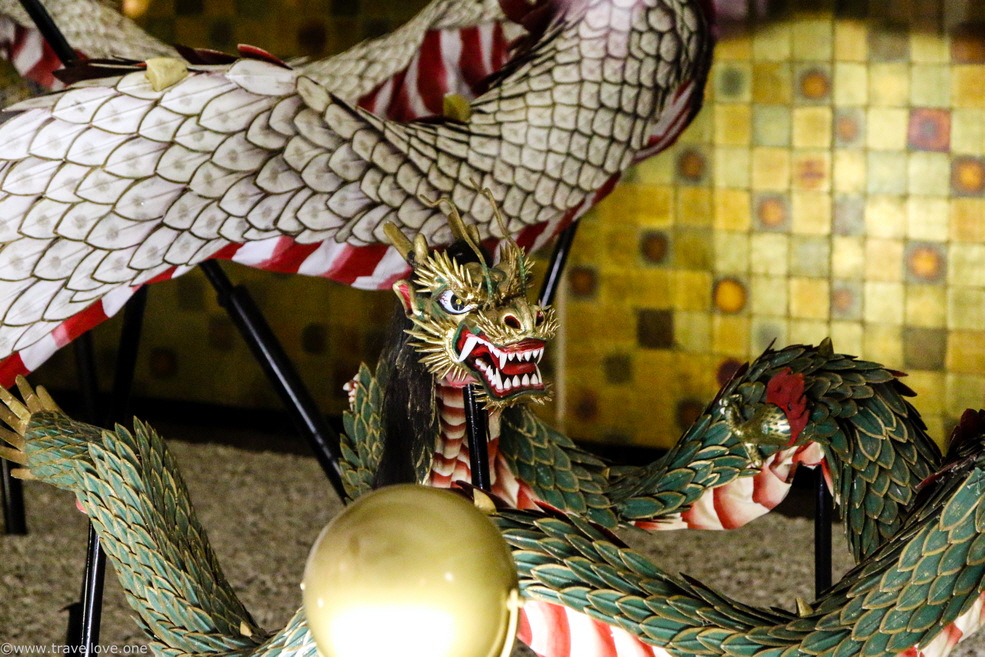
On our way down to the port we didn’t succumb to the temptation of buying sweets from the stalls, even though the shop assitants tried to tempt us ever so nicely.
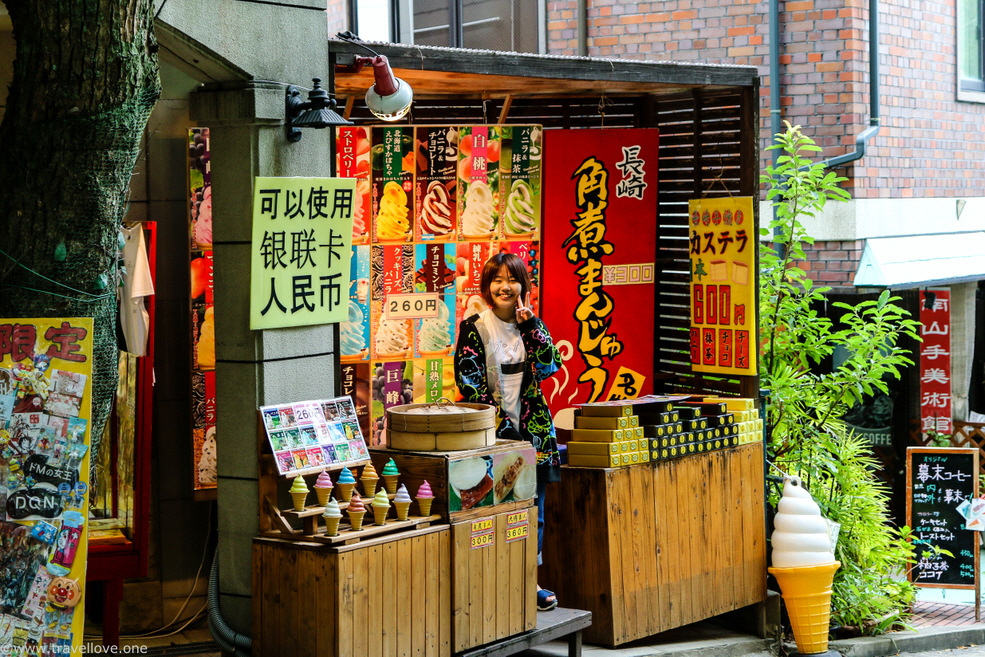
To return to the ship we only had to cross the street. In front of the terminal there was a small concrete building with the inscription Nagasaki Peace Museum.
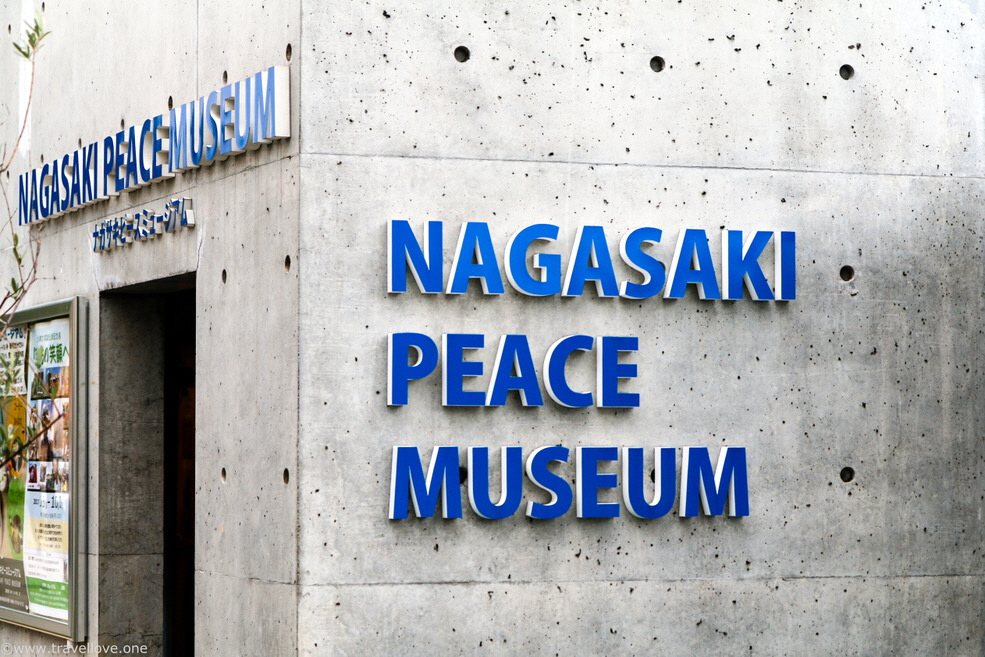
Admission was free, the exhibition was simple and yet meaningful. It was limited to pictures of laughing children from all over the world, because the hope for peace lies in the children of this world. Somehow it was nice to end the visit on these pictures.
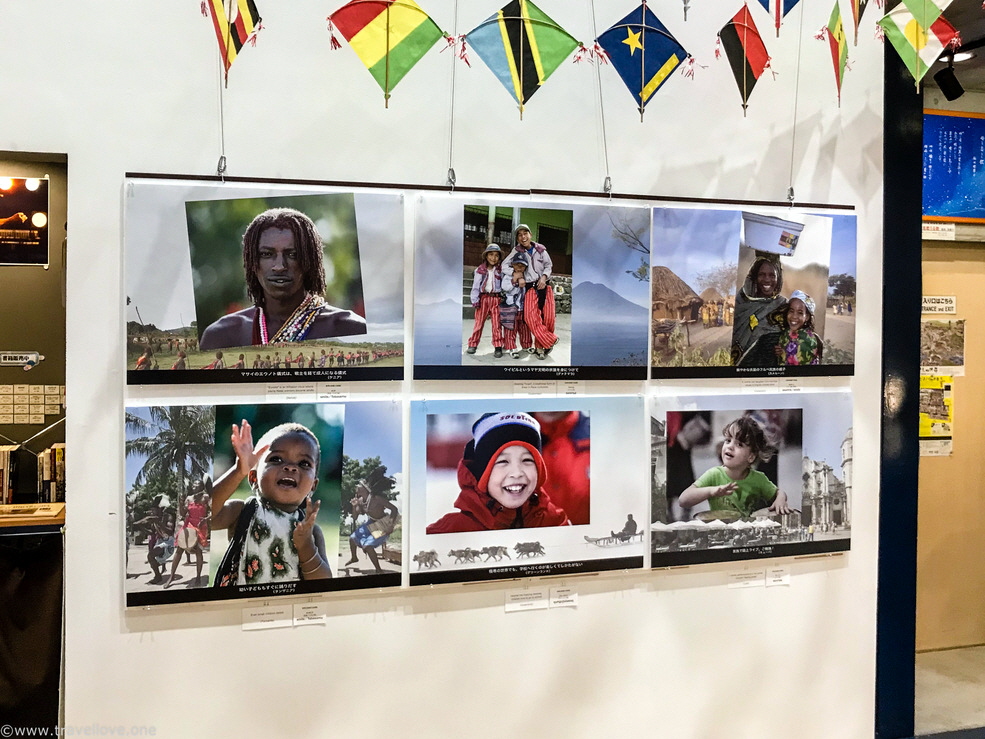
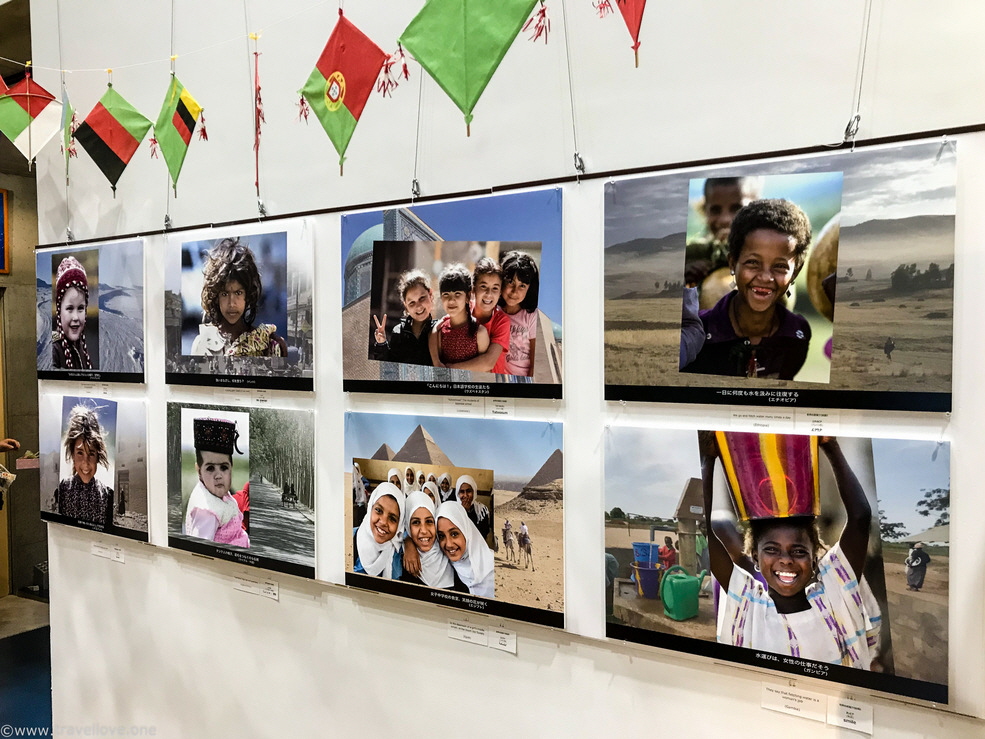
For our last sailaway in Japan, we were seen off by a band in port. The loud blowing of the horn of the Millennium was answered by the trumpeters. That’s a moment that always gives me goose bumps.
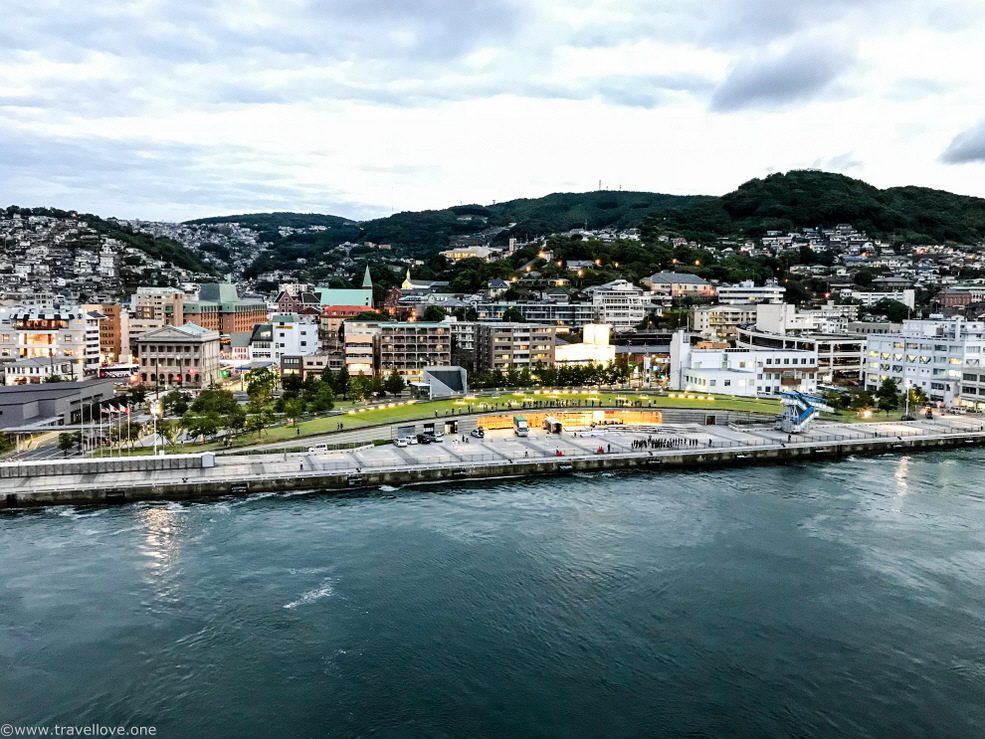
We sat outside on the deck for quite a while and talked about the day and our beautiful journey, as we passed underneath the bridge again and left Japan behind us. We were missing it already.
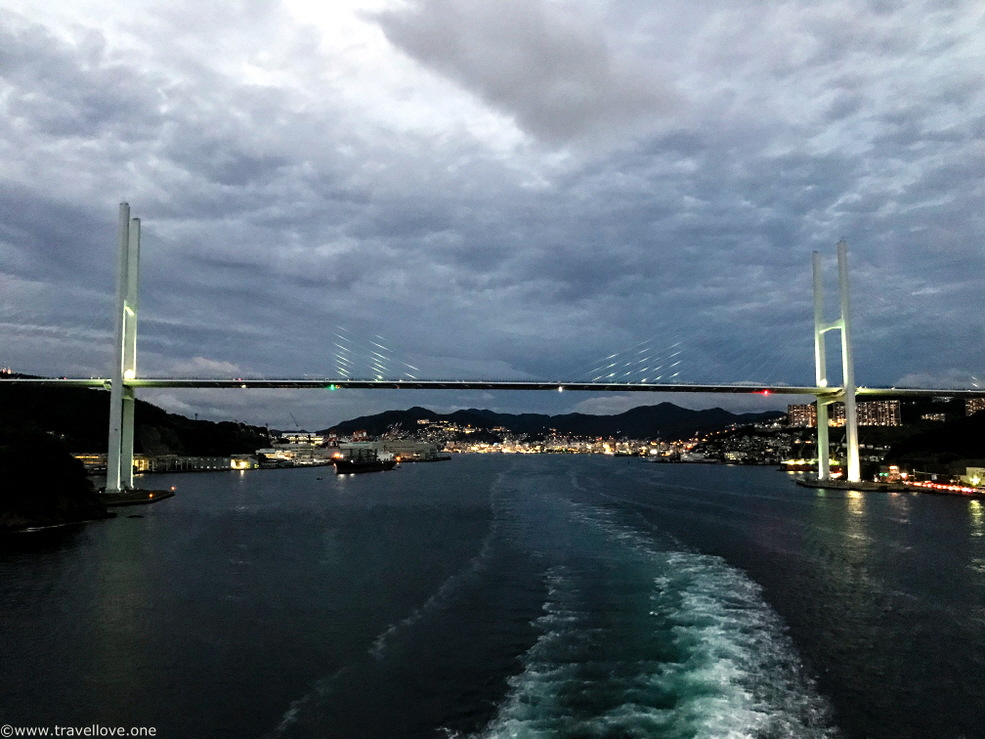
www.travellove.one • www.thecruise.report • www.travelandcruise.net
© 2021 Die Rechte an Texten, Fotos und Videos liegen beim Autor der Webseite. Die Nutzung ist nur nach ausdrücklicher Freigabe erlaubt.
